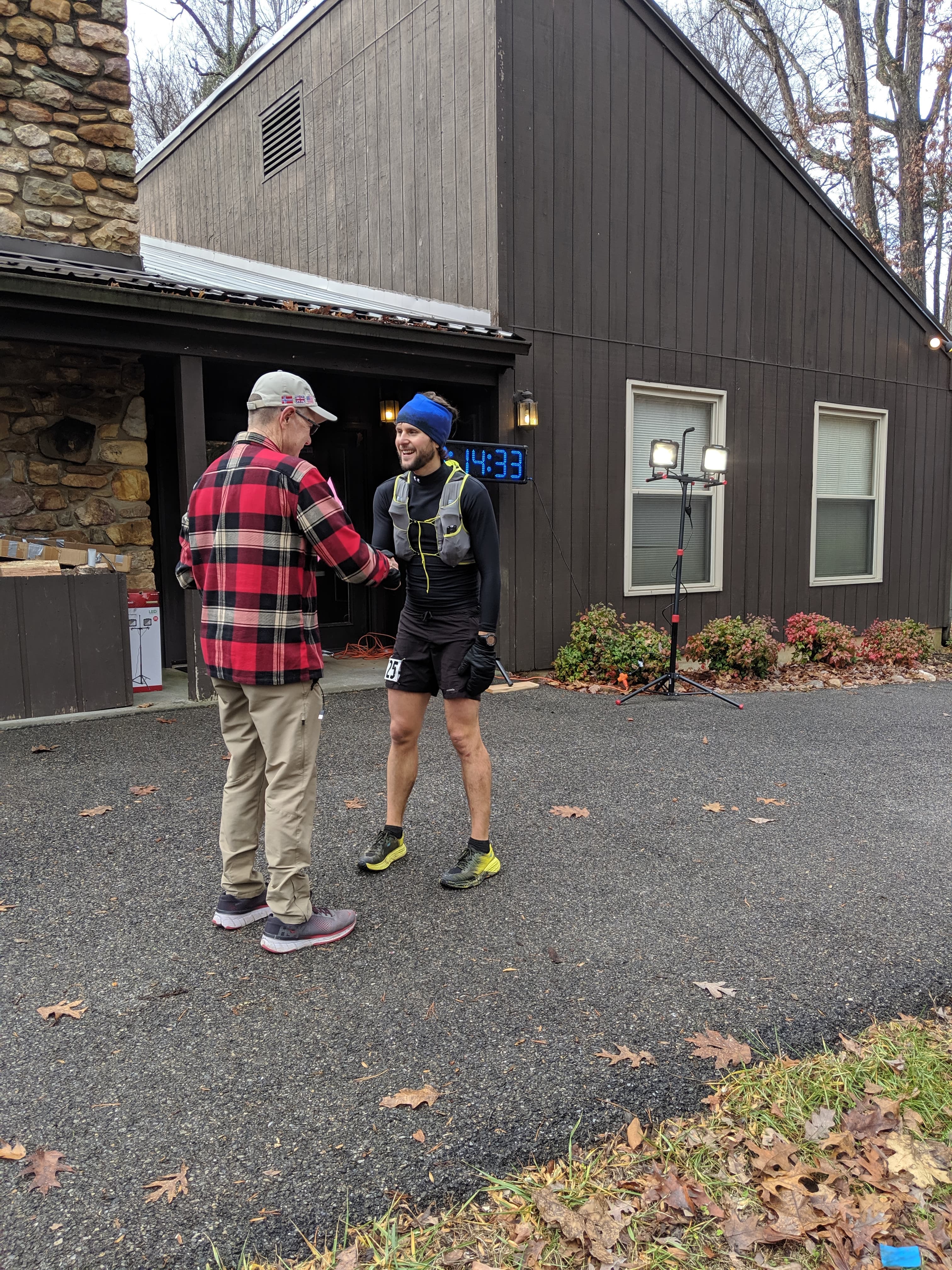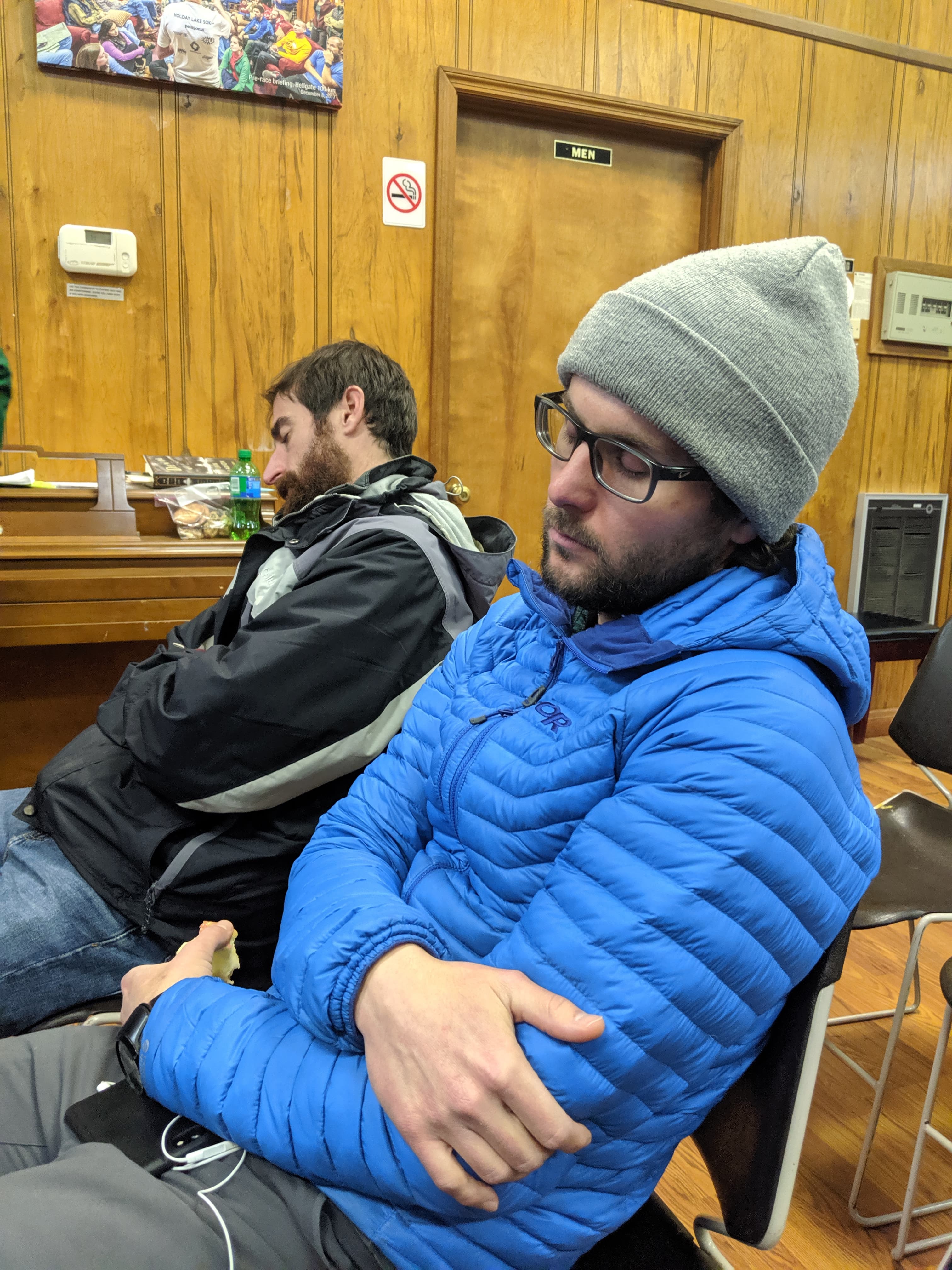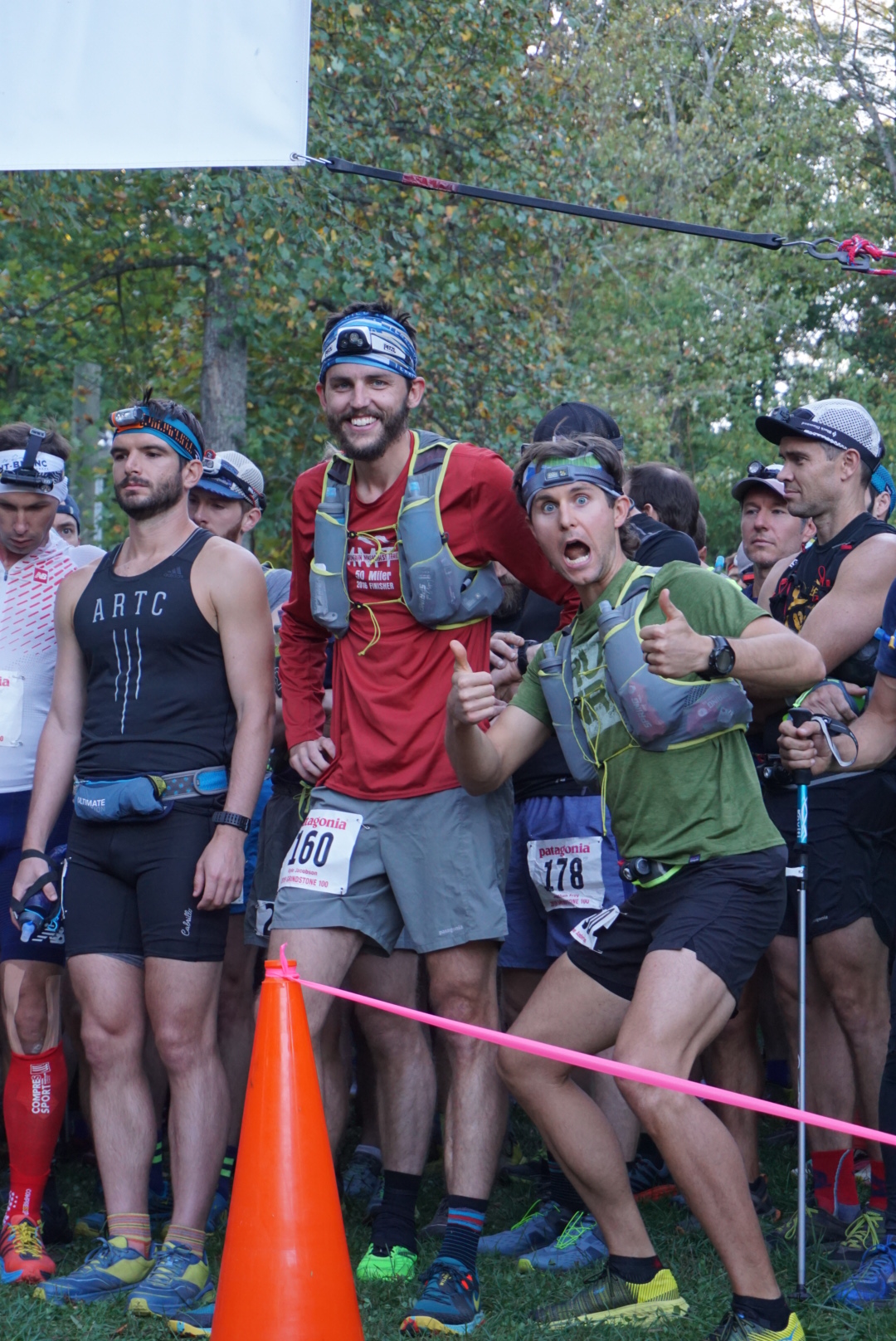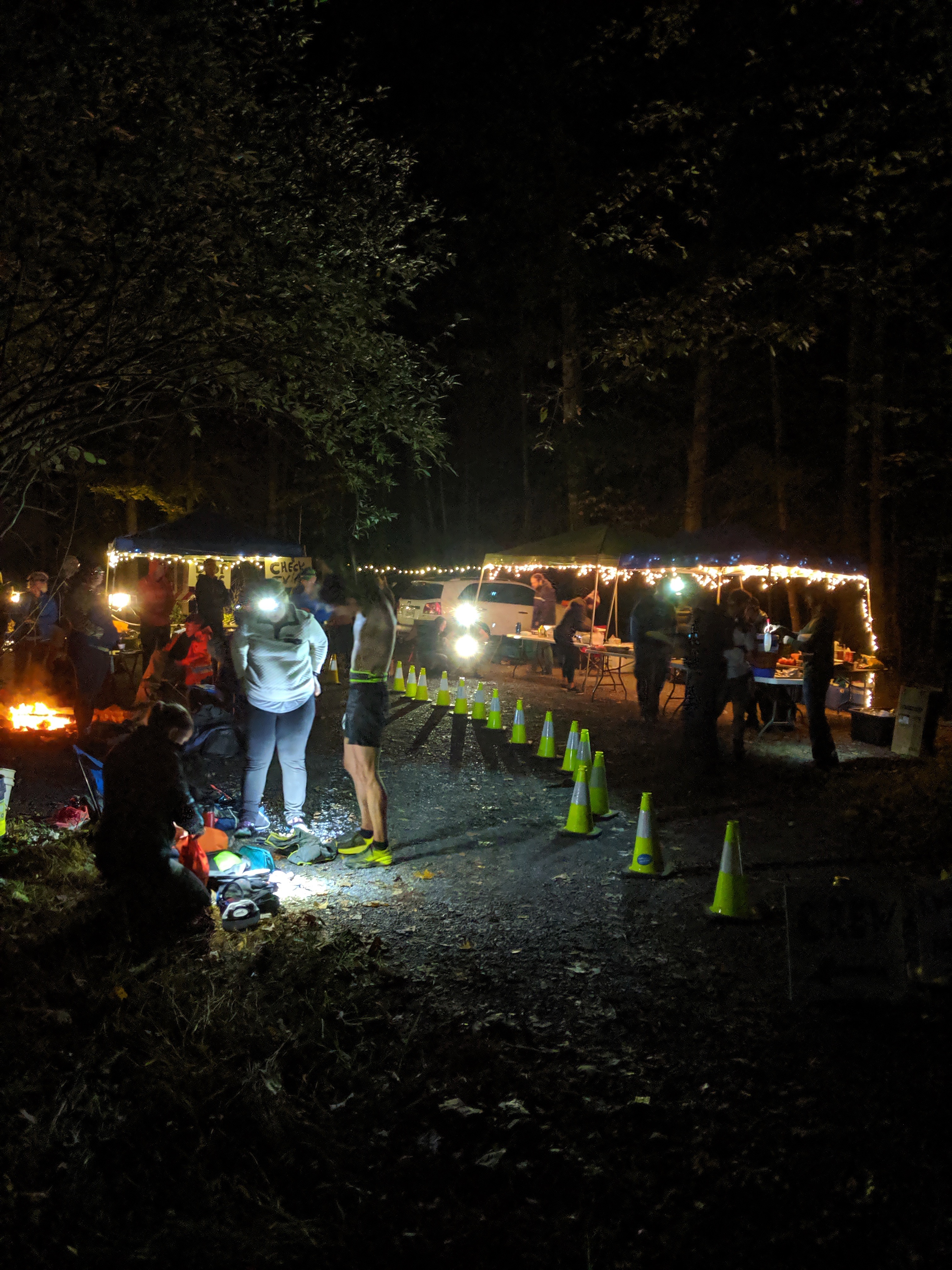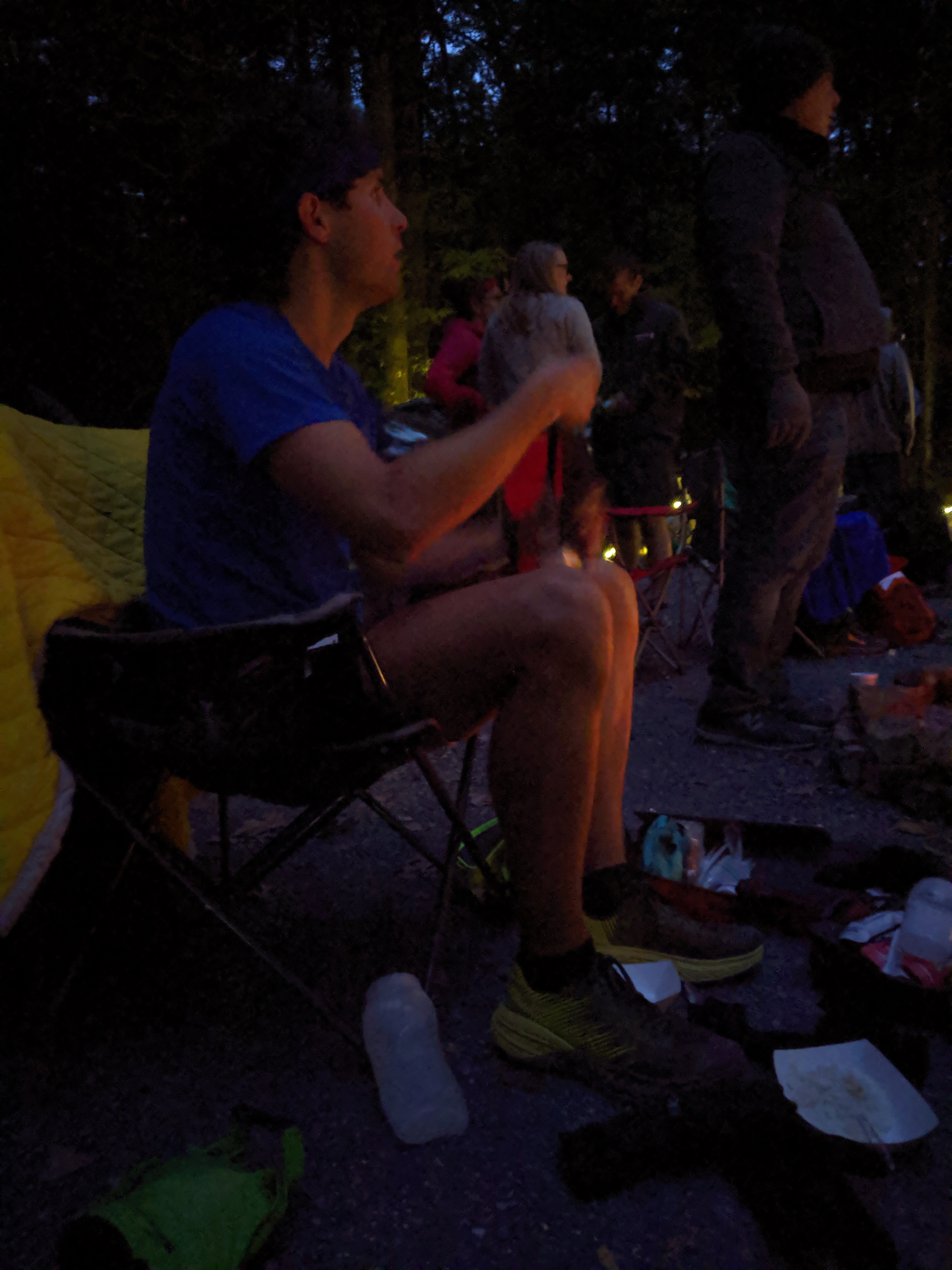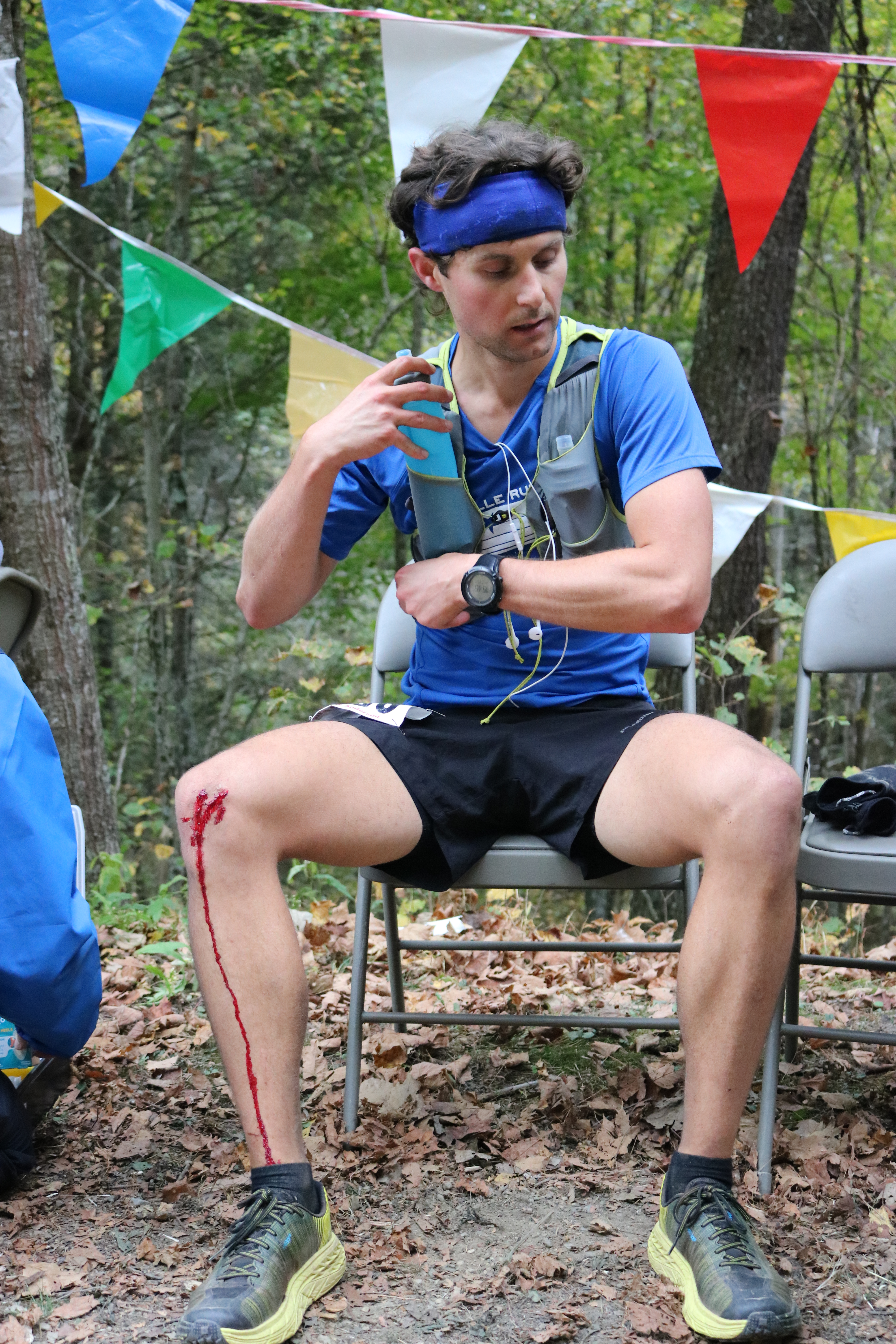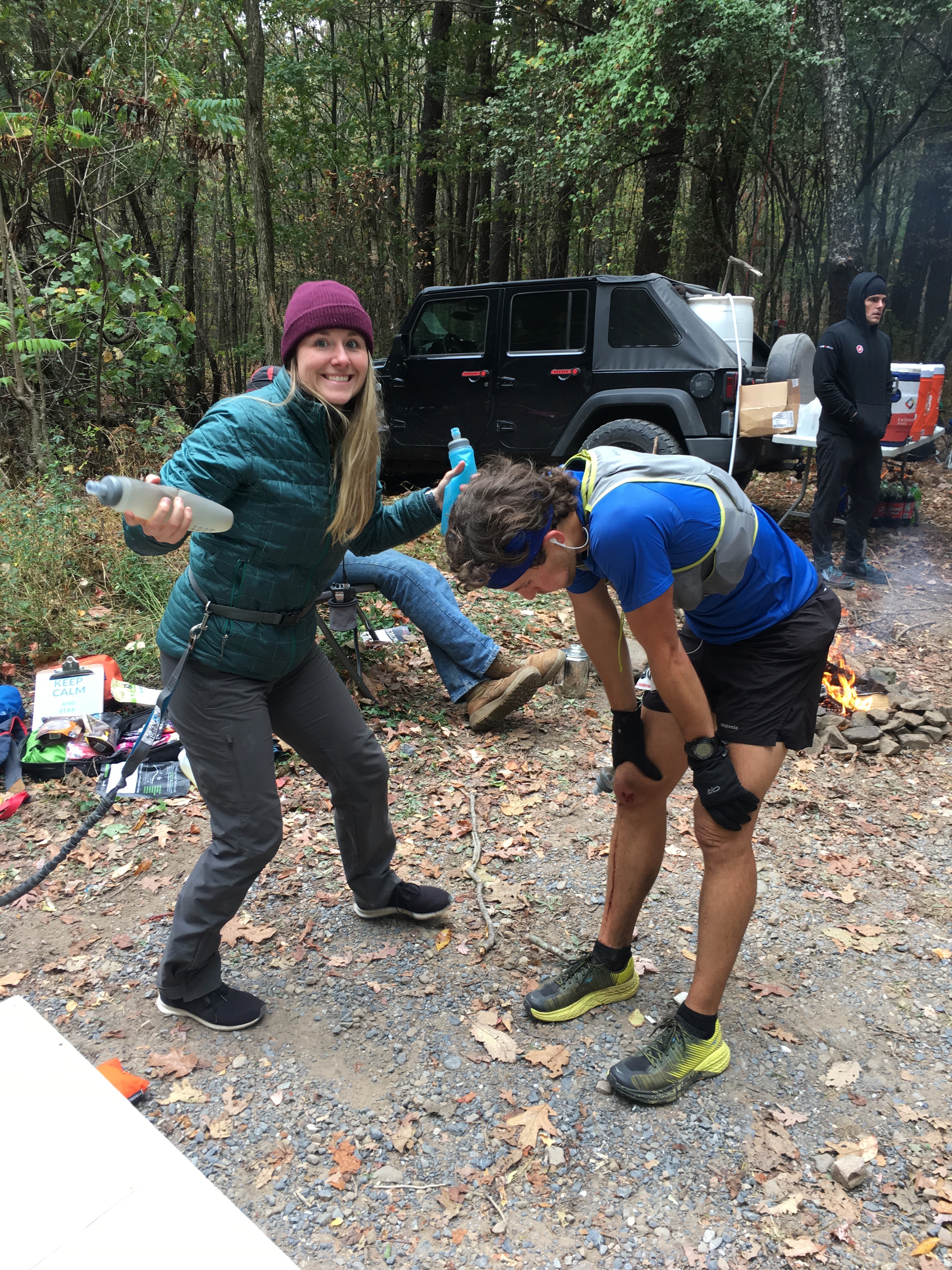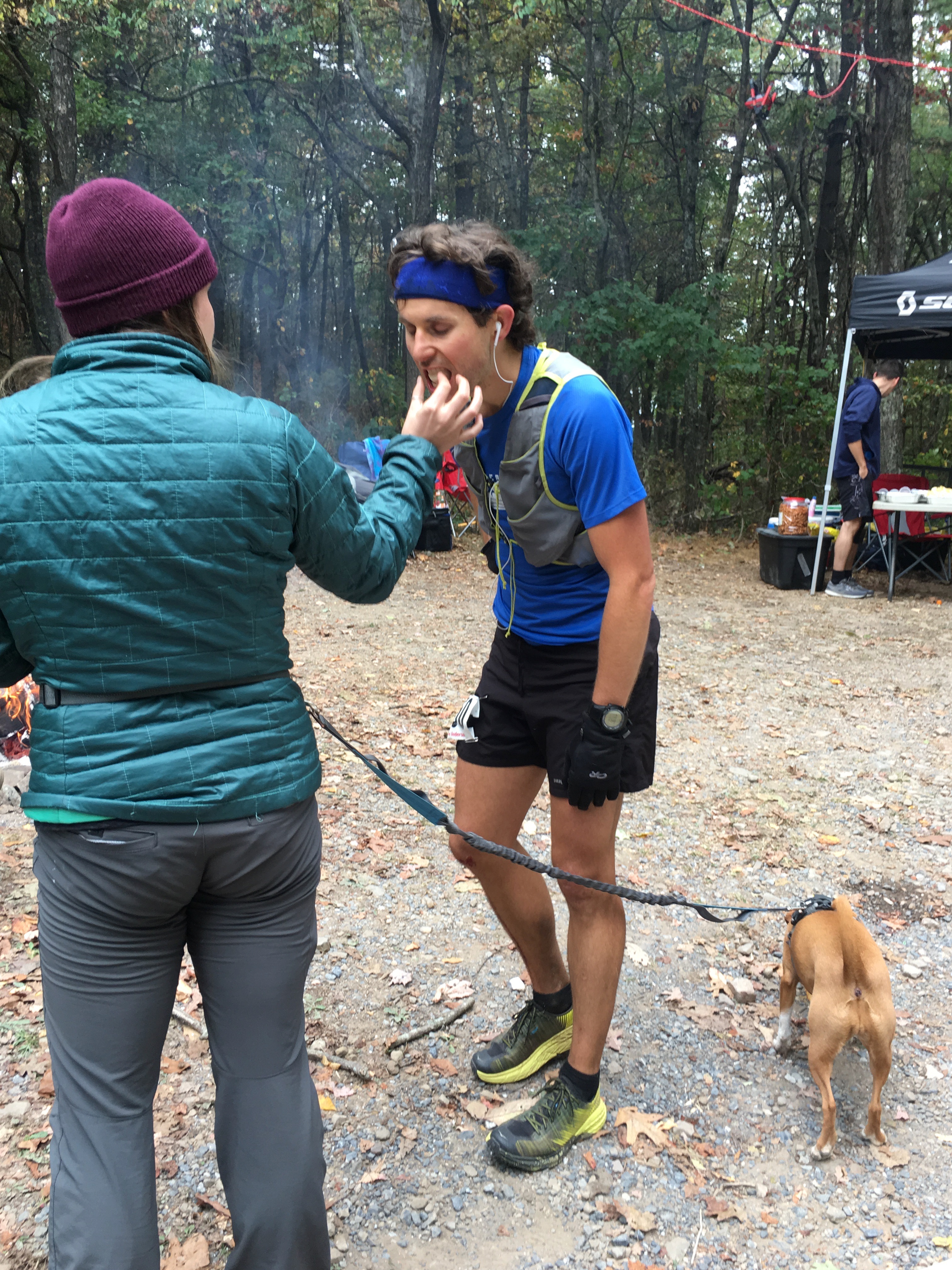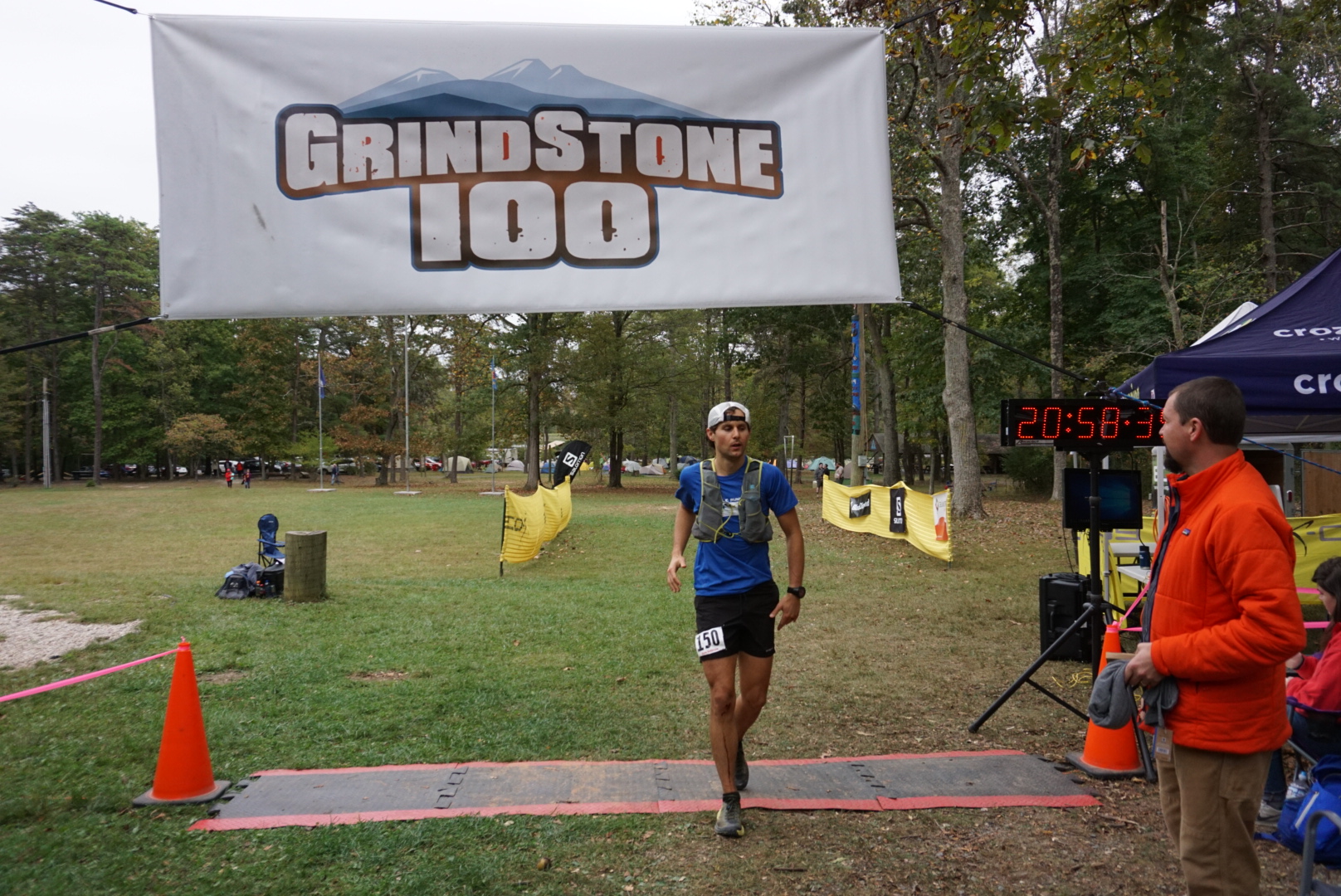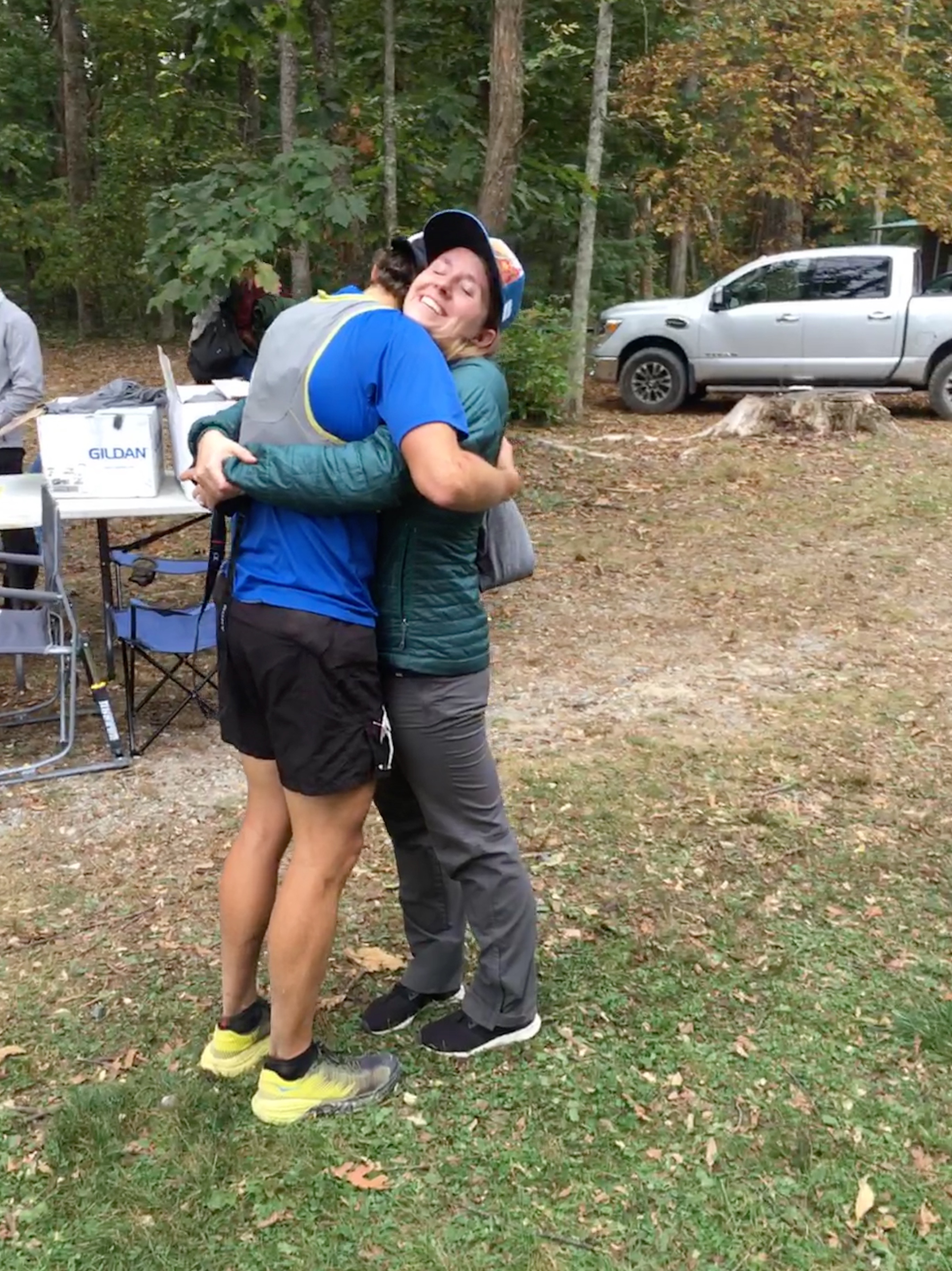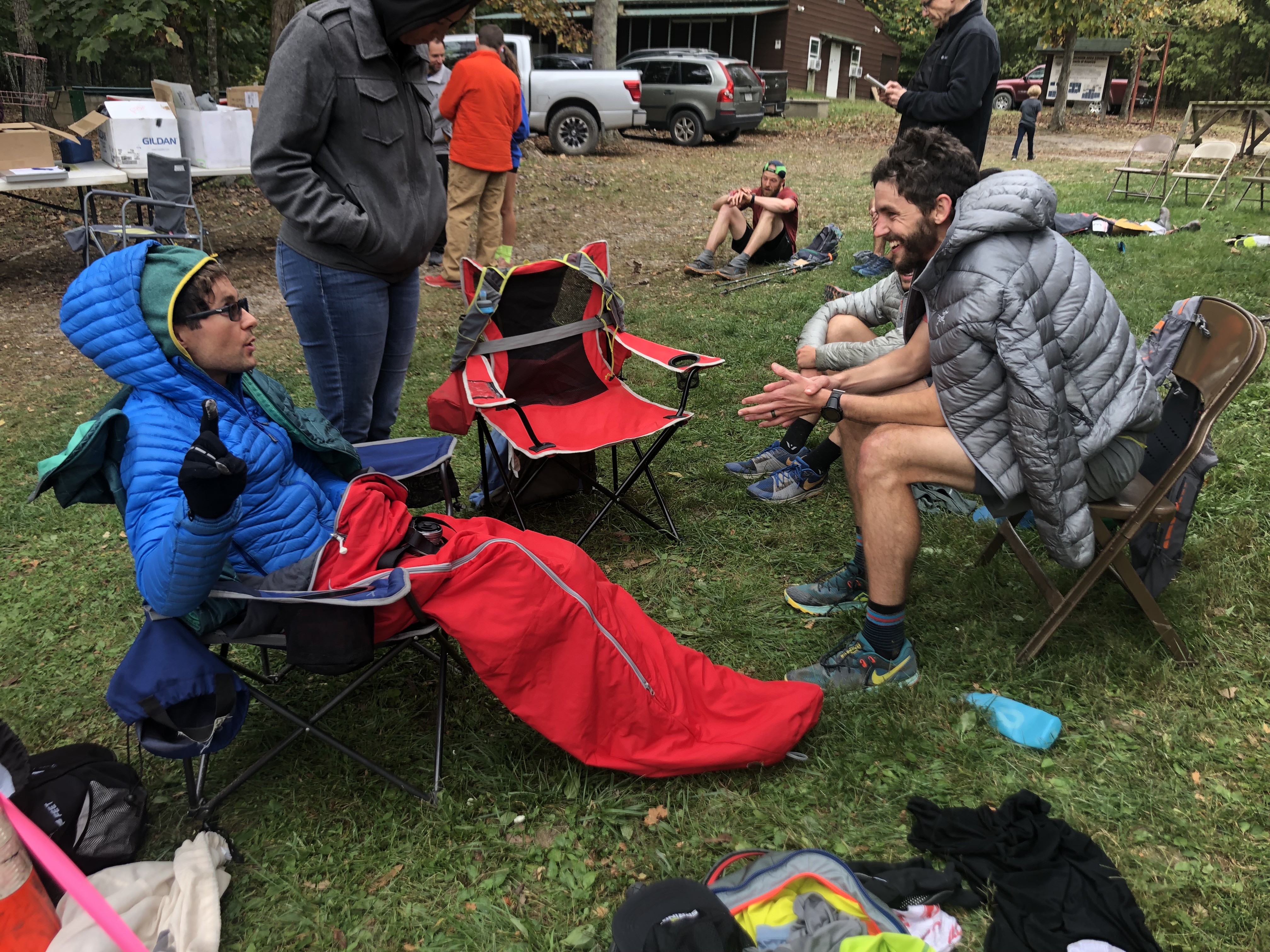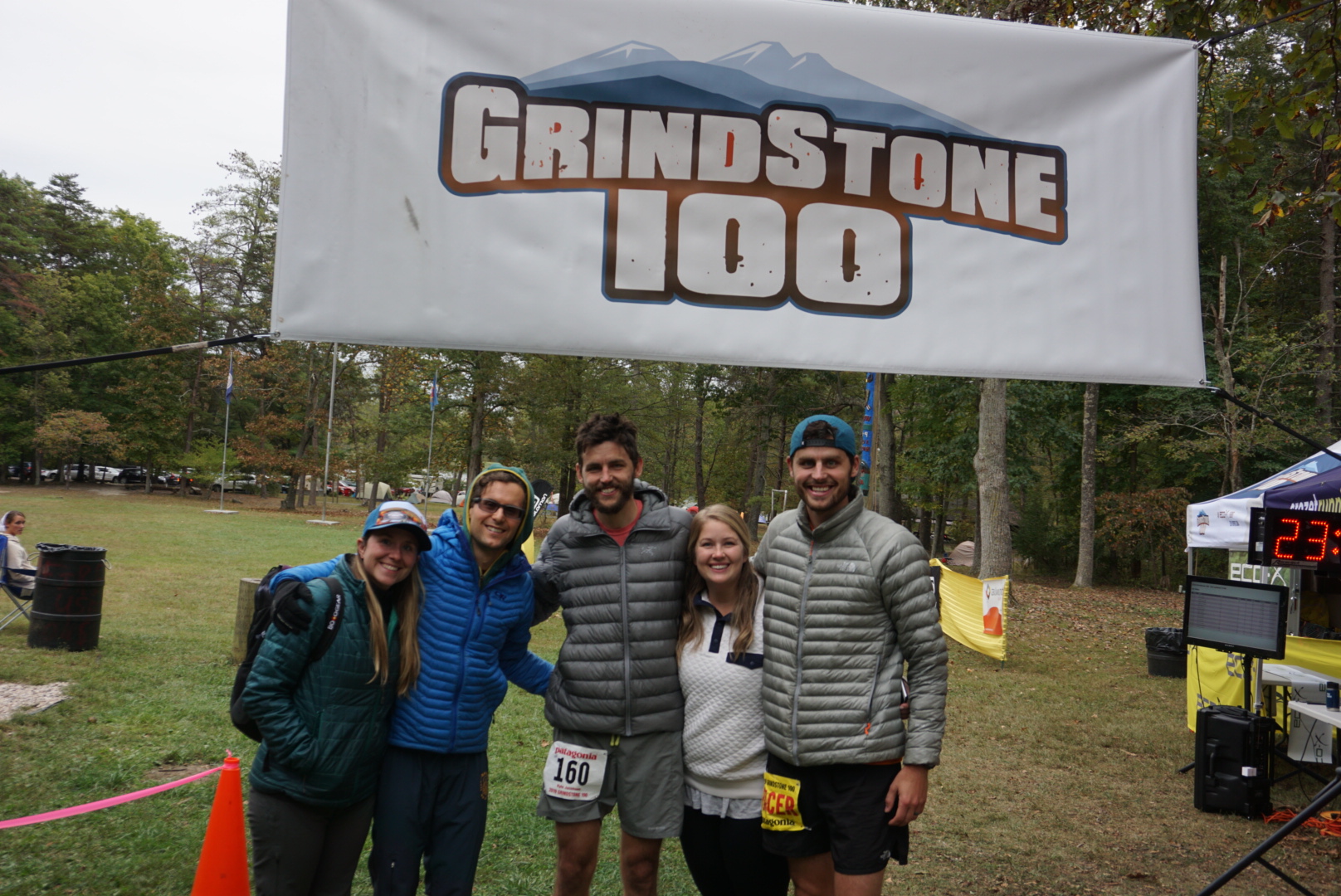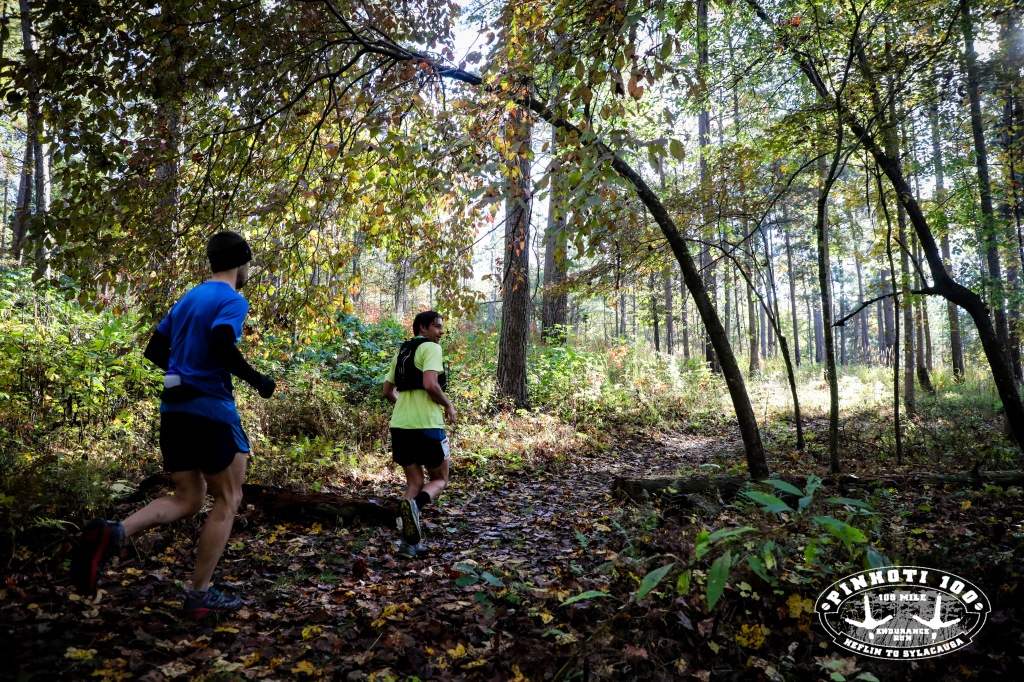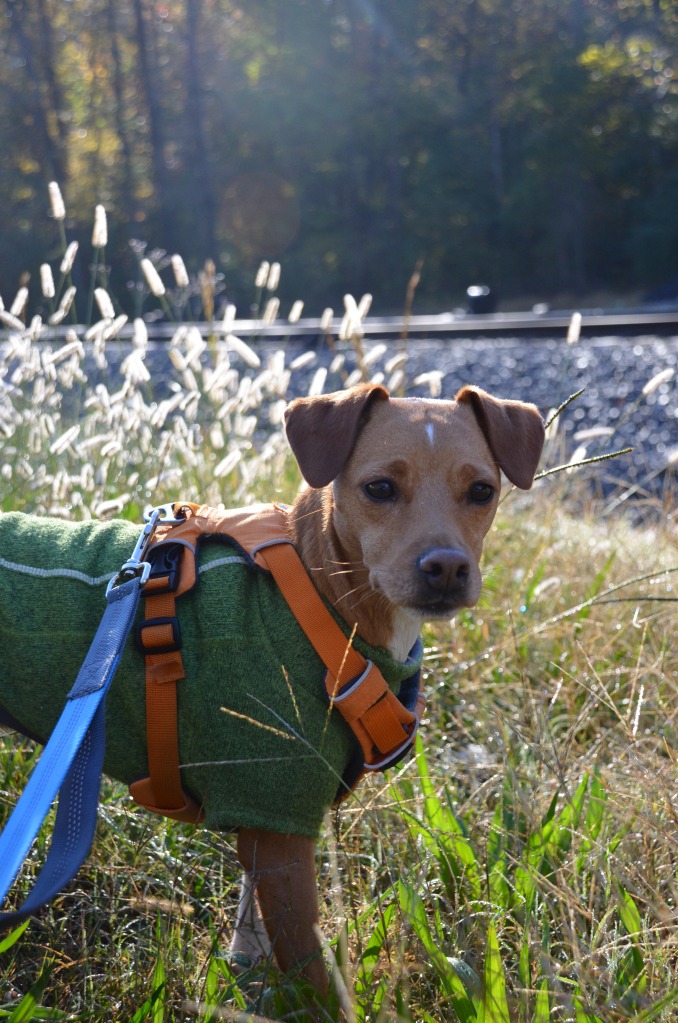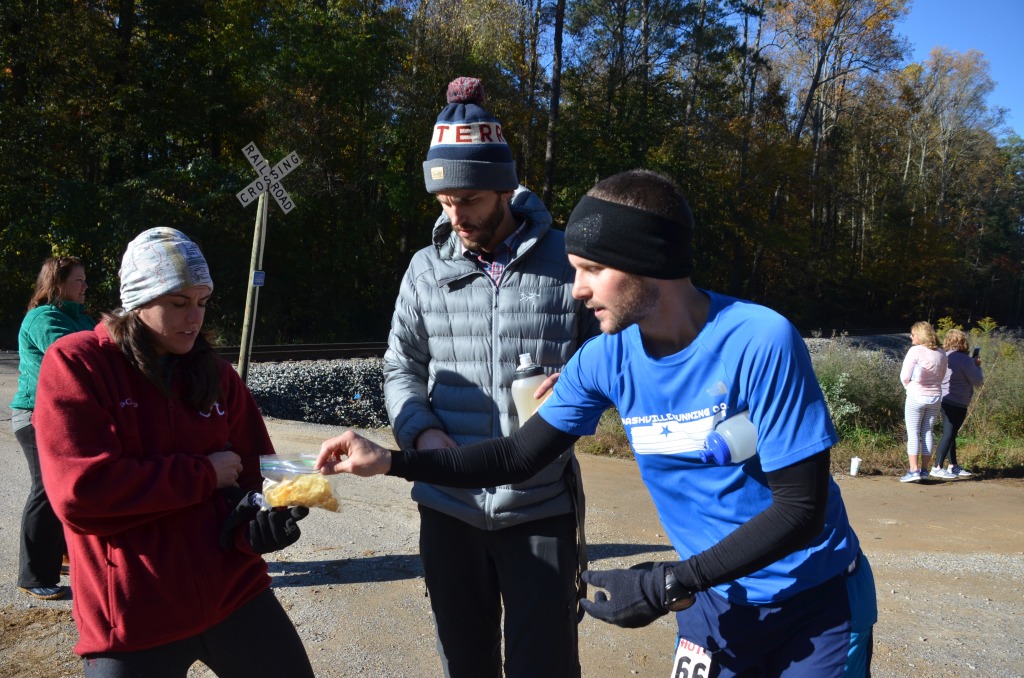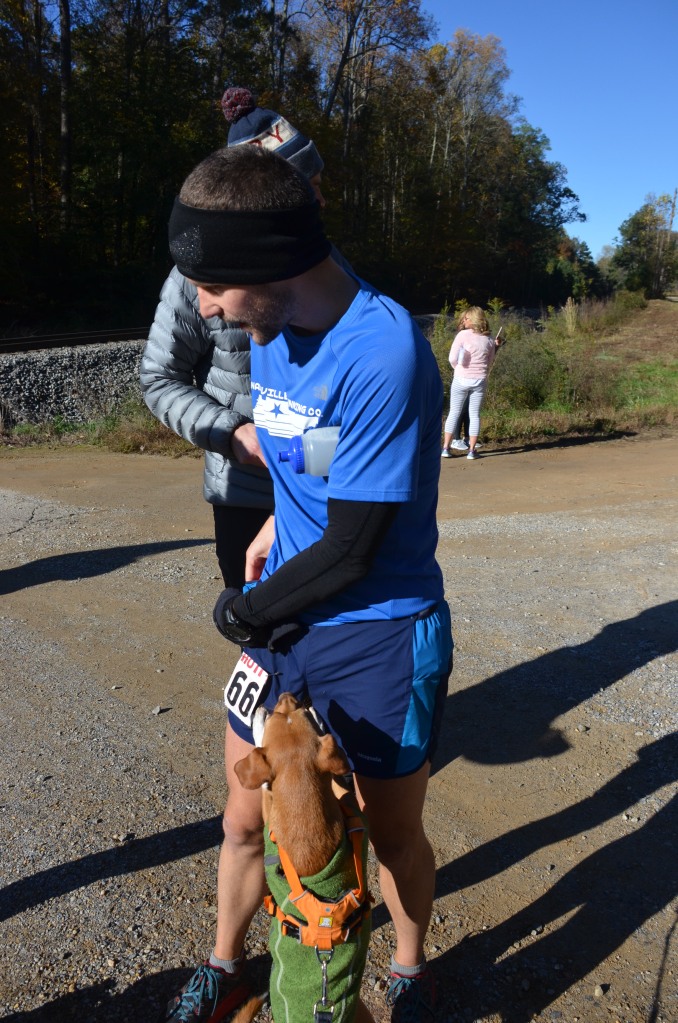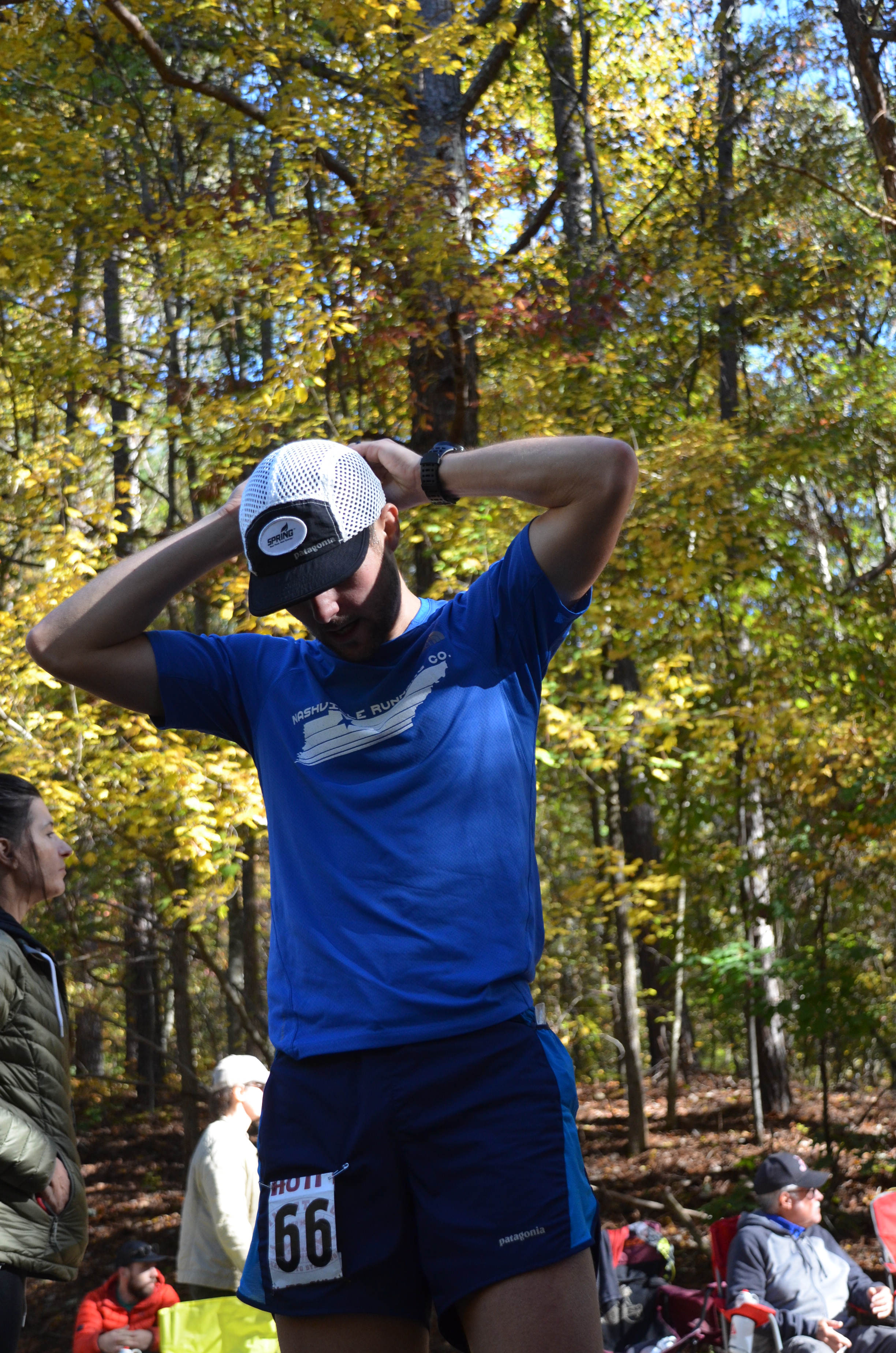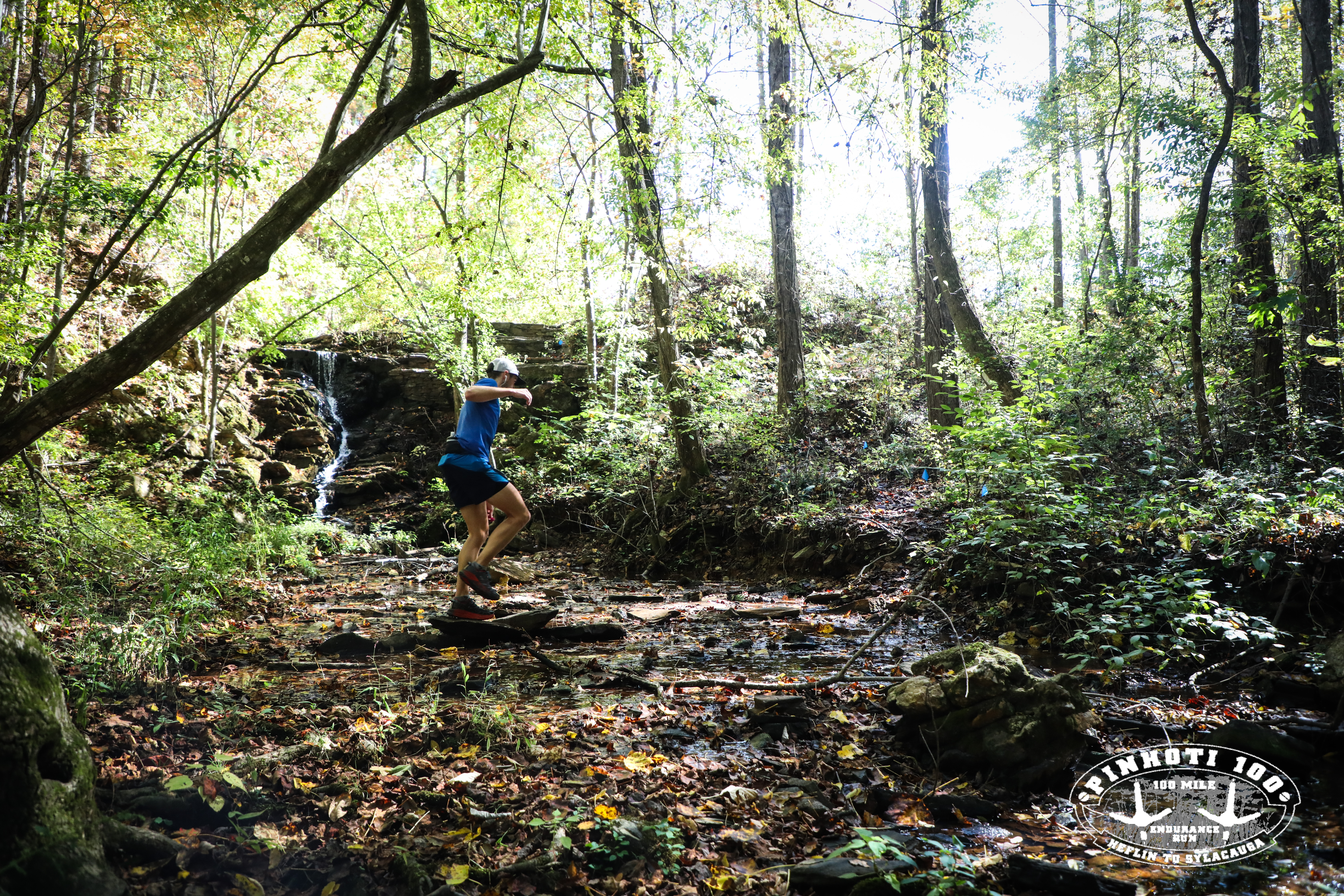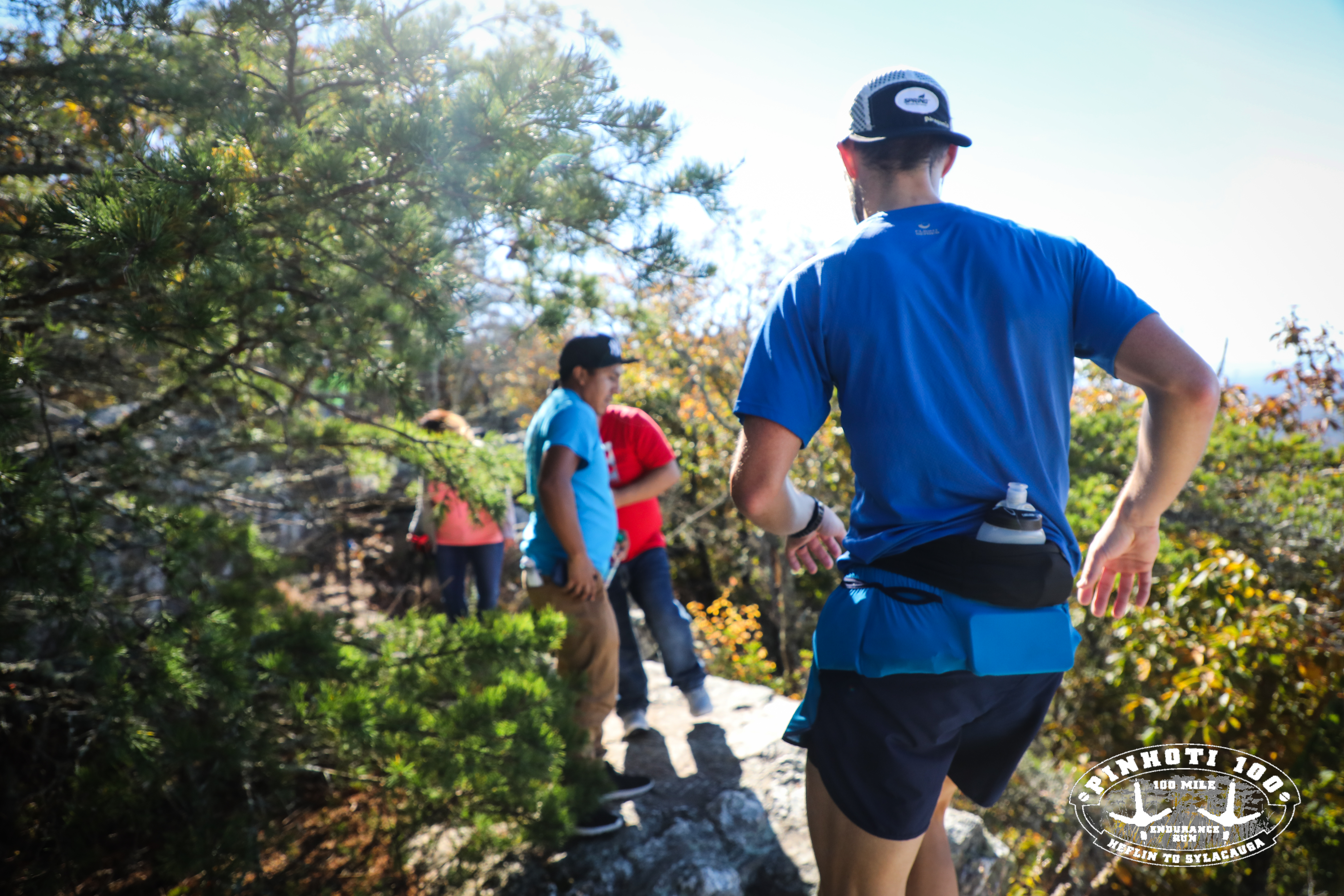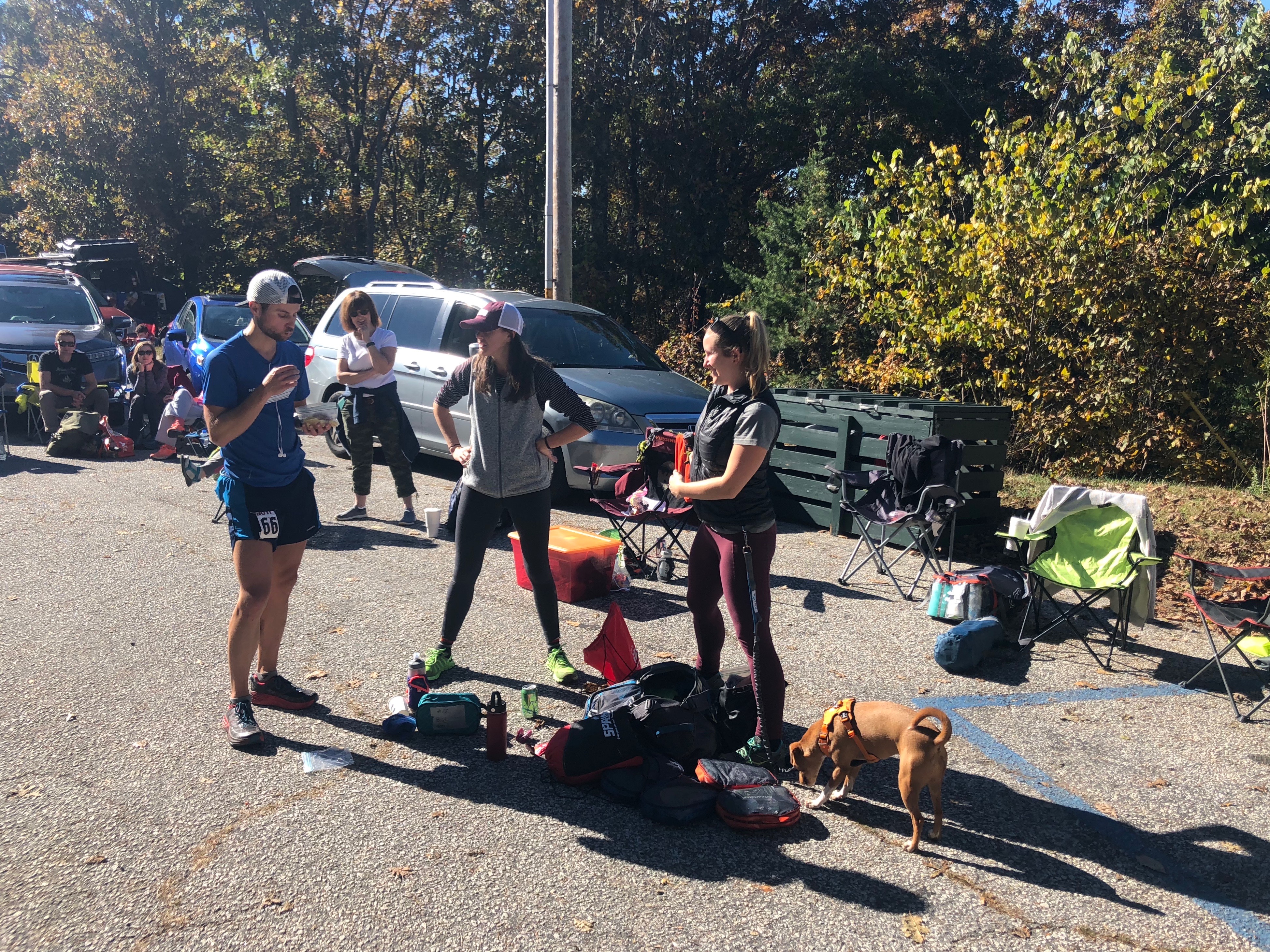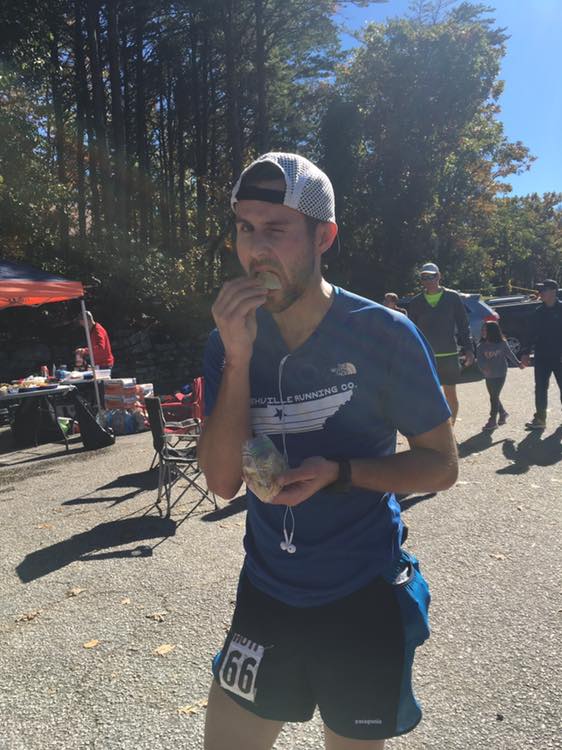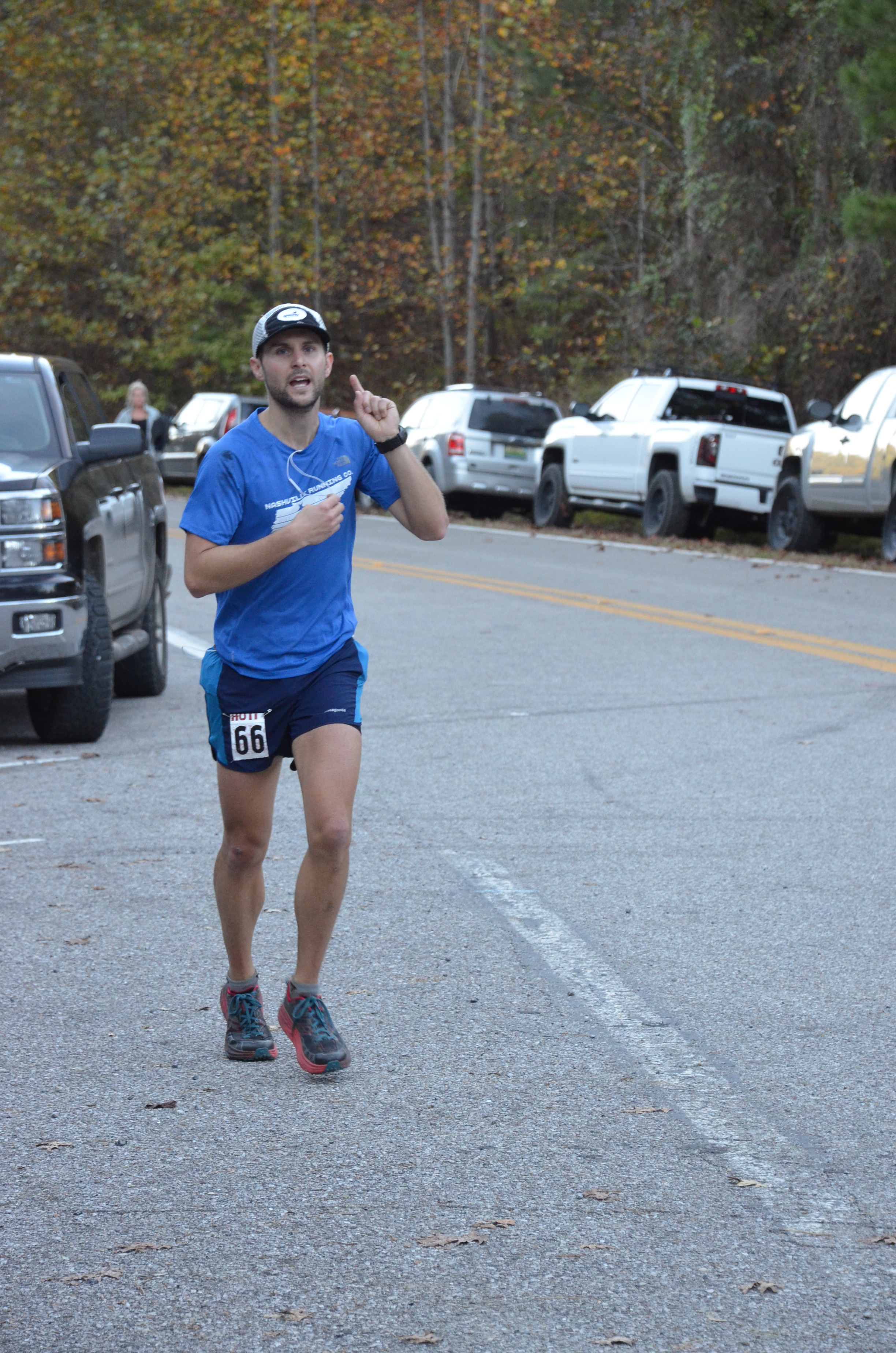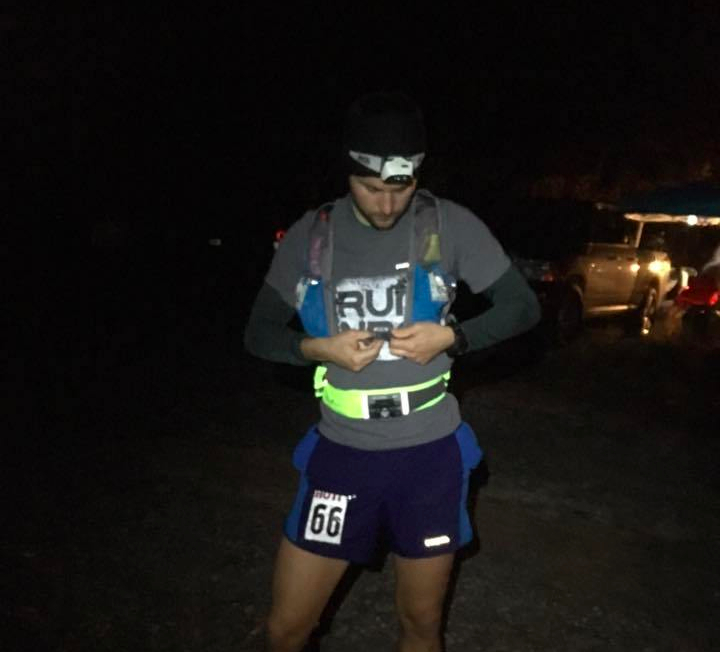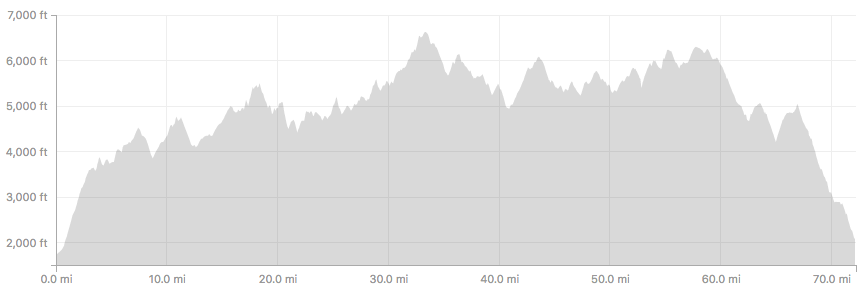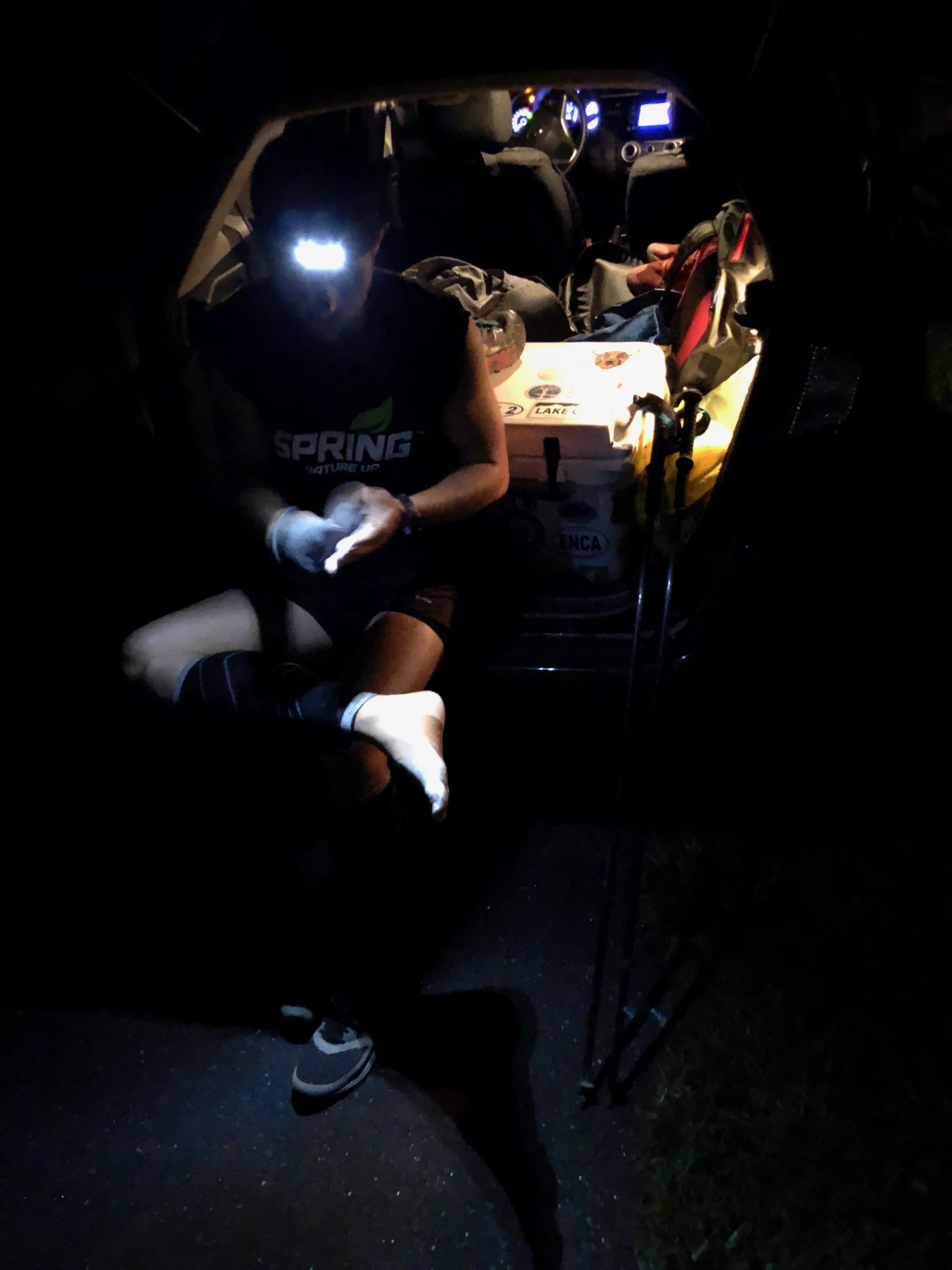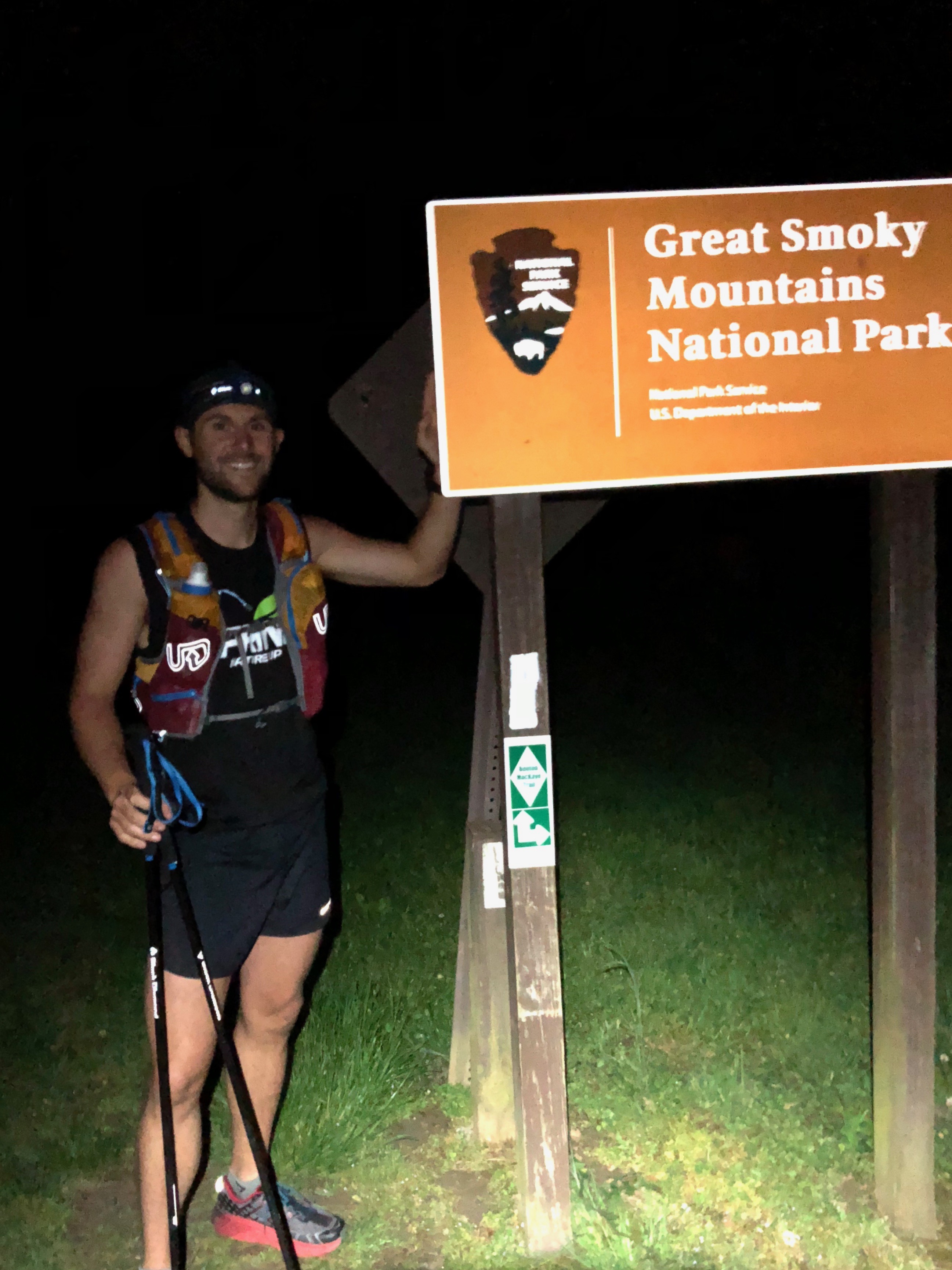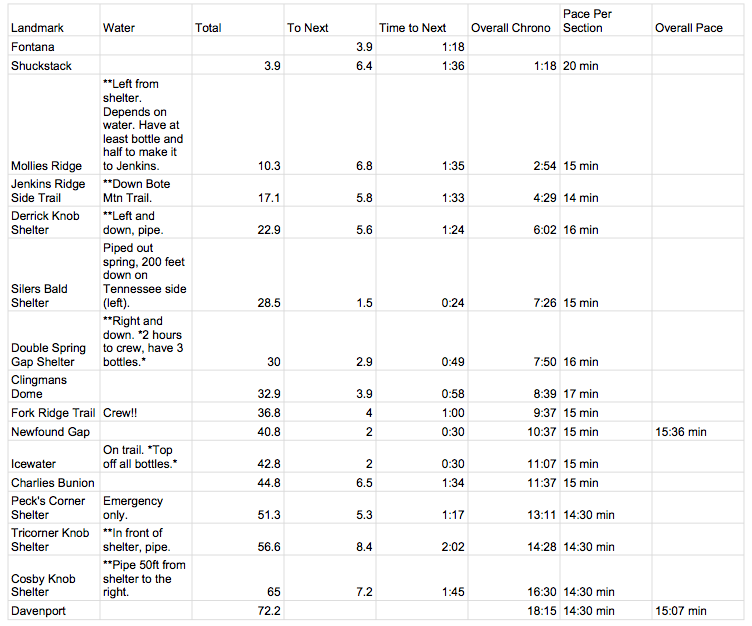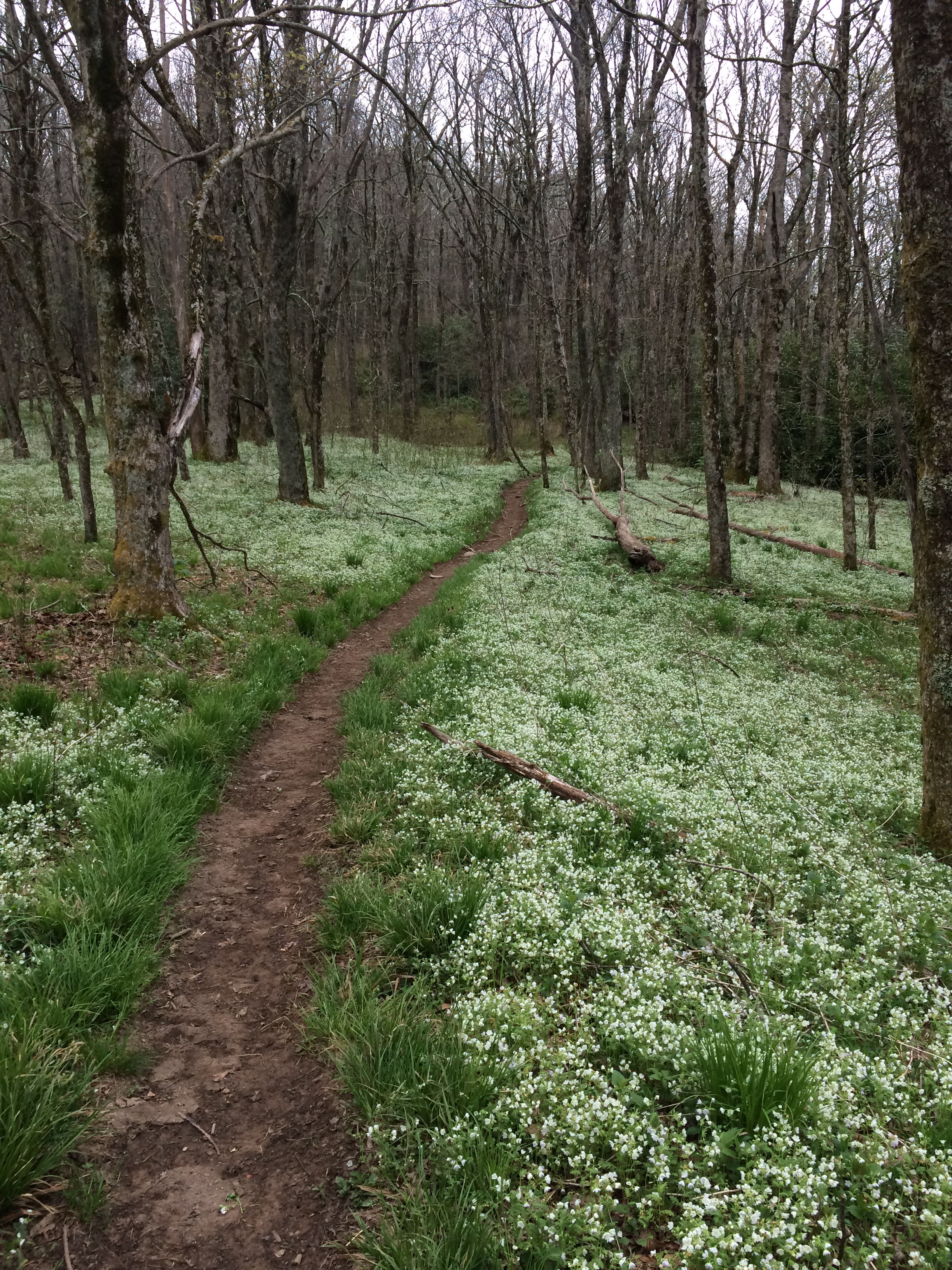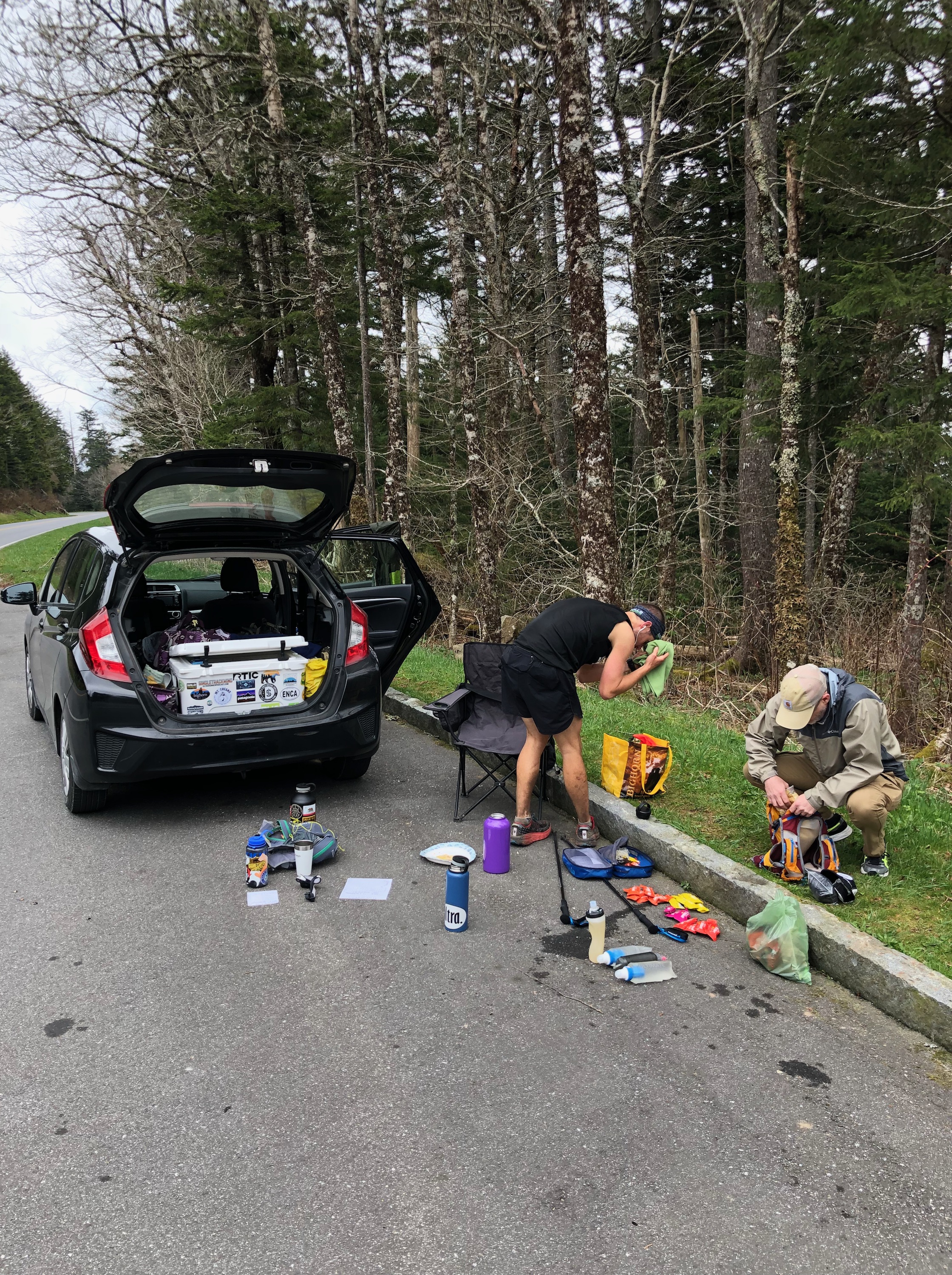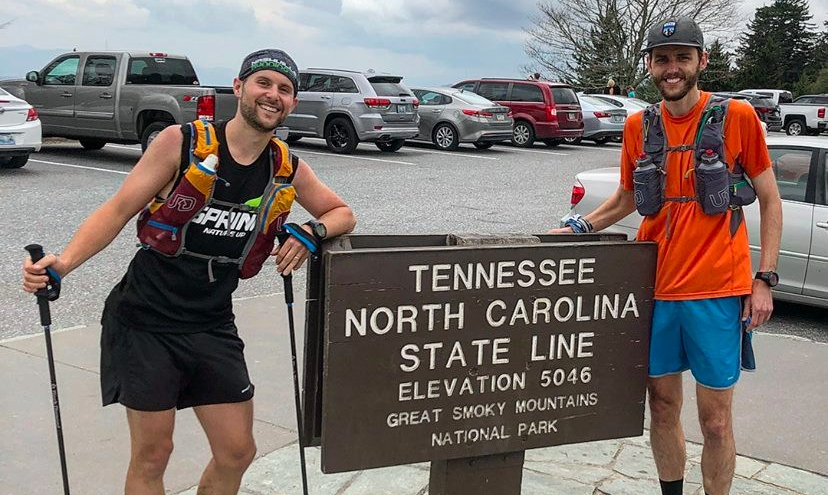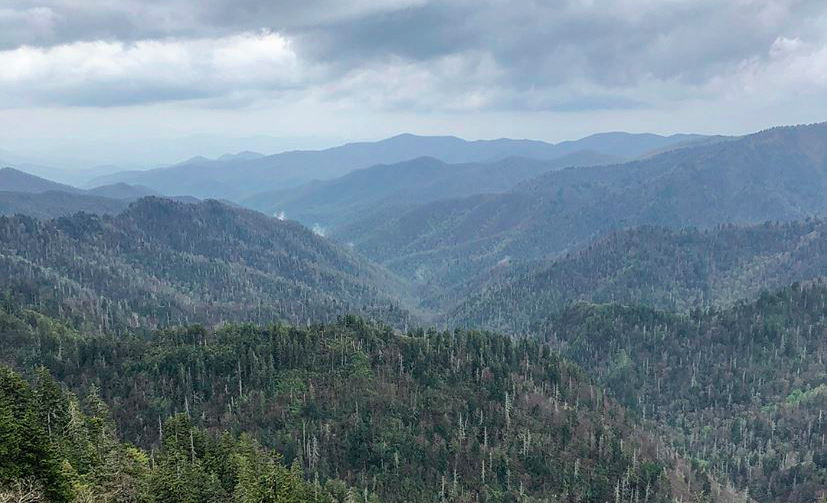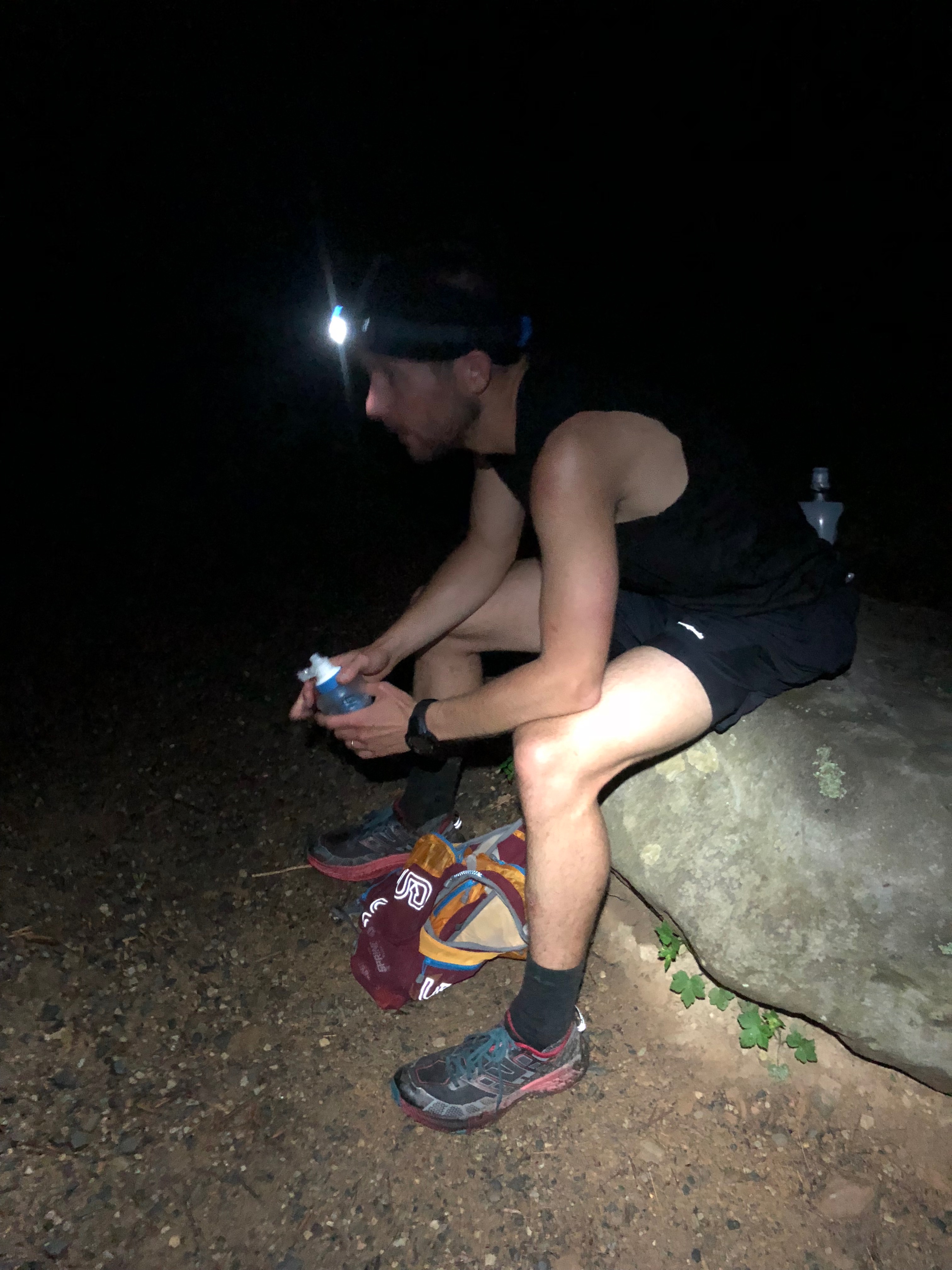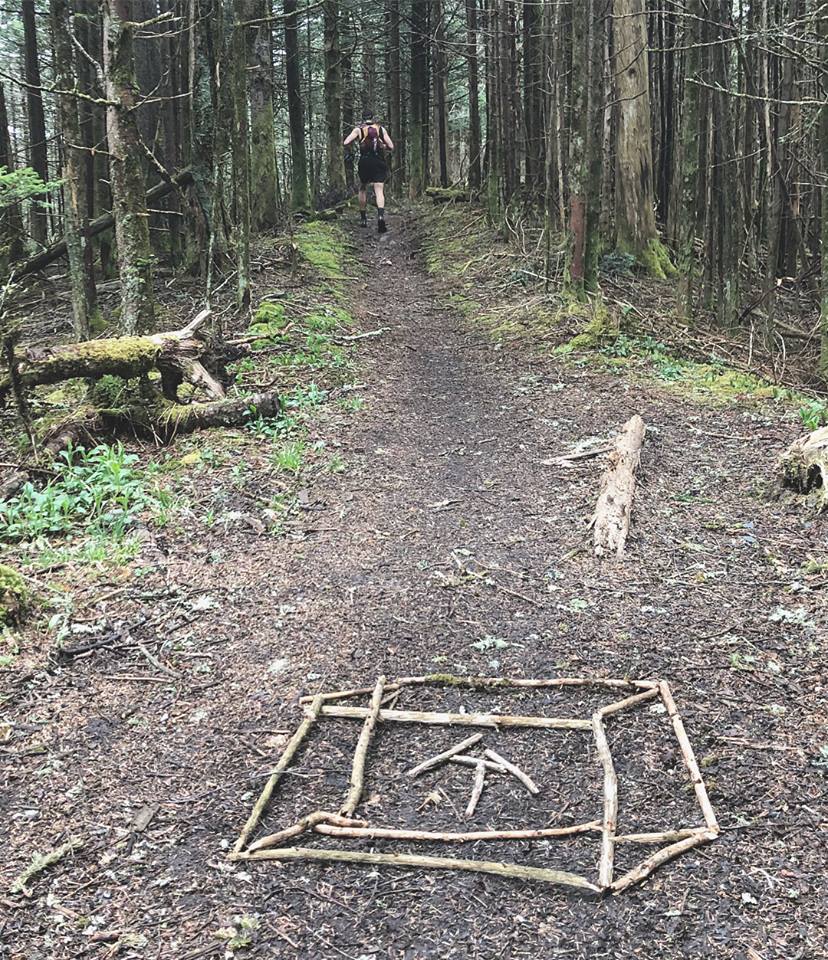The 2017 edition of Bighorn, which takes place in the Bighorn Mountains of Wyoming, served up some of the worst conditions in race history. Extended rain turned the course, already famous for its muddy sections, into an absolute mess that was unrunnable for 40 miles. One person I ran with in the beginning later sustained a concussion from a bad fall in the mud. Scuttlebutt at the aid stations and on the internet also indicate one runner broke their ankle and had to ride out on a horse, while another broke their nose from a fall. Bighorn is advertised as “wild and scenic.” It was indeed scenic and perhaps a little too wild.
Last fall, I decided to run Bighorn as my first 100. Wanting a summer 100 and Hardrock qualifier, Bighorn fit the bill. A strained quad/groin from overzealous training sidelined me for a couple of weeks in March and served as a blessing in disguise. I had a heightened sense of anxiety in preparing to run 100 miles. If I was going to run further than I ever have before, then I needed to run more miles in training than I ever have. I kept pushing the envelope in training, and the early warning signs of doing too much began to creep up. My legs were constantly tight, I would have some days with little to no energy, and my daily runs were more stressful than enjoyable. In 3 consecutive weekends, I raced a hard 50k, did a seven and half hour long run in the Smokies, and capped the last weekend off with an intense 50k training run. I went for an easy jog on the treadmill the following day, and my right leg was extremely unhappy. Being forced to take two weeks off to let my quad and groin heal up made me realize that I would never make it to the start line if I kept going hard every week. My training shifted from trying to hit a high weekly mileage goal, to keeping the mileage consistent with focused blocks of accumulating vert. With my new approach to training, the mini freak outs became less frequent the closer I got to the race. I felt fitter than ever and confident in tackling 100 miles.
Jeff volunteered to fly out and serve as my one-man crew/pacer pretty soon after I had signed up. He would be the perfect pacer to keep me moving and would entertain zero thoughts of dropping. We flew into Billings, Montana the Wednesday before the race and made the two-hour drive down to Sheridan, Wyoming. We stopped for a quick detour at the Little Bighorn Battlefield National Monument and enjoyed the experiential history of artifacts and battle sights. A quote from Sitting Bull resonated with me, “You are fools to make yourselves slaves to a piece of fat bacon, some hard-tack, and a little sugar and coffee.” While my 100 mile run is, of course, trivial compared to defending your ancestral land from a government reneging on their promises because they want to mine for gold, I hoped that I would not succumb to the creature comforts of a warm aid station and the allure of dry socks.
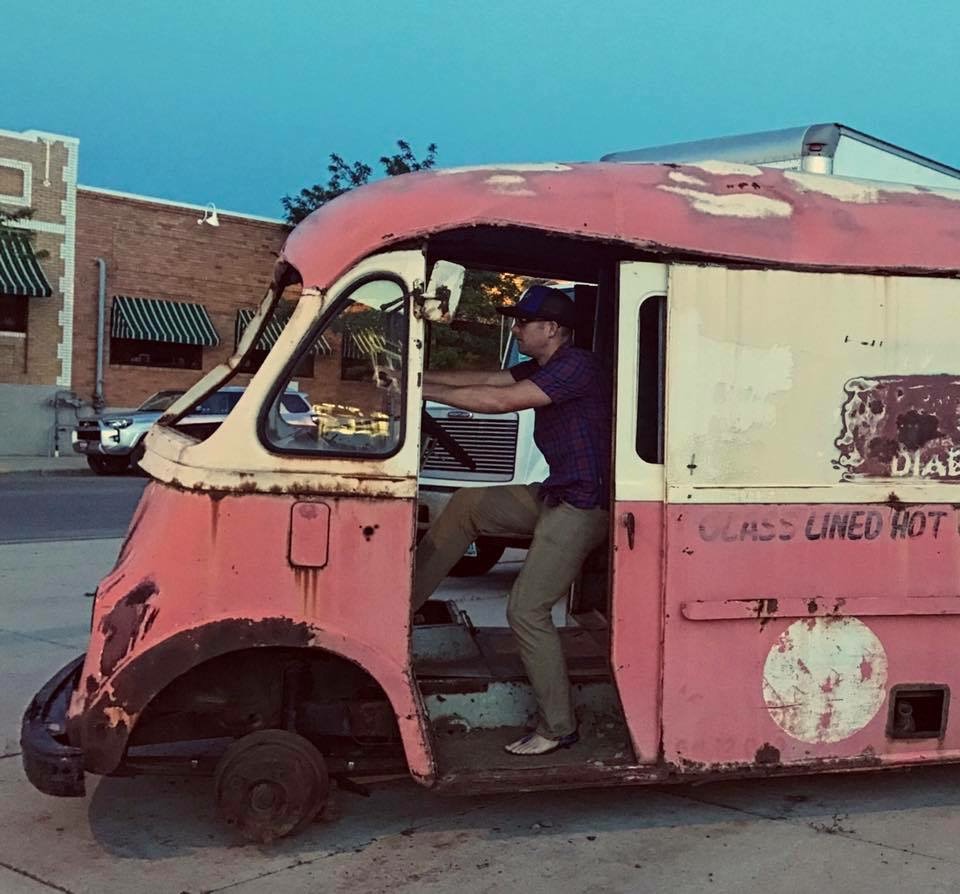
This van would have definitely got stuck in the mud. Photo- Jeff
Friday morning finally rolled around after poking around in Sheridan for a few days. The race started at 10 AM to fair temps and an overcast sky. The heat that pounded the runners last year would not be a factor this year. There was a chance of rain, but the forecast was not dire. It seemed conditions would be just about perfect.
The first 13.5 miles to Dry Fork aid station had a little over 4,000 feet of ascent. All that climbing served as a perfect governor to keep the effort level low from the start. I caught up to the legendary Andy Jones-Wilkins right before the aid station, and we would go on to run the next 27 miles together. Jeff helped to refill my bottles, reload my pack with Spring gels, and I was quickly out of Dry Fork. I would not see Jeff again until mile 48 at the turnaround where he would then pace me all the way back to the finish.

Climbing up. Photo- Emile Baizel
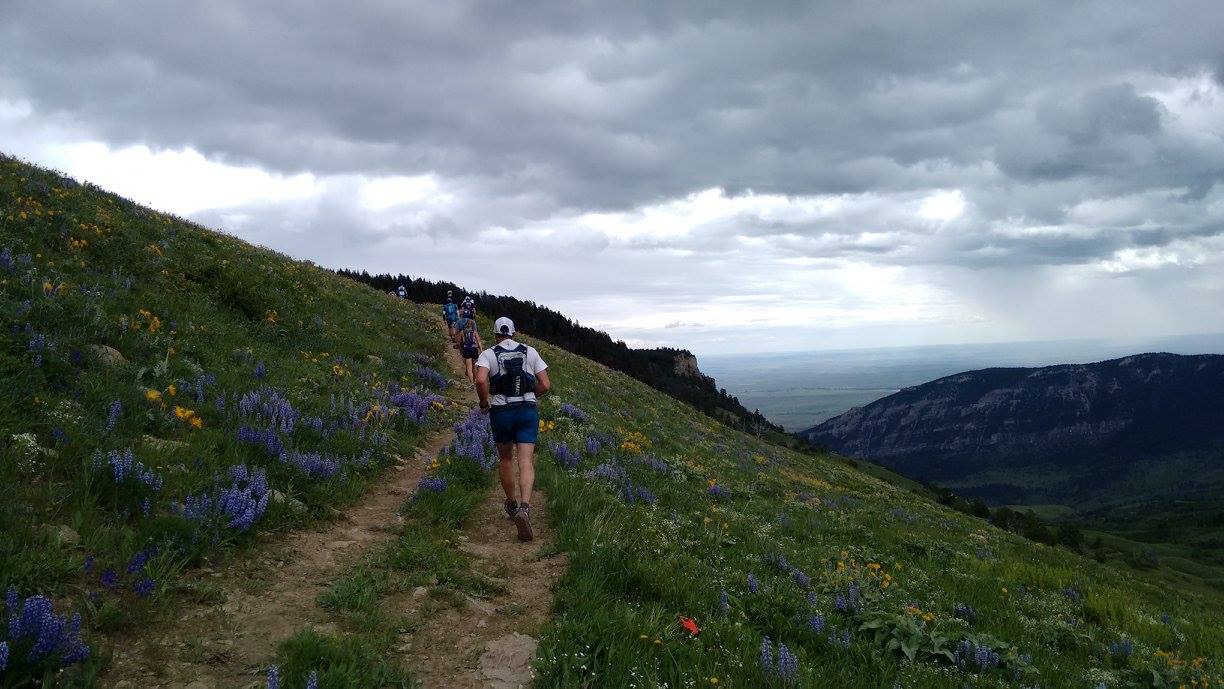
Pretty flowers and ominous clouds. Photo- Sunaad Nataraju
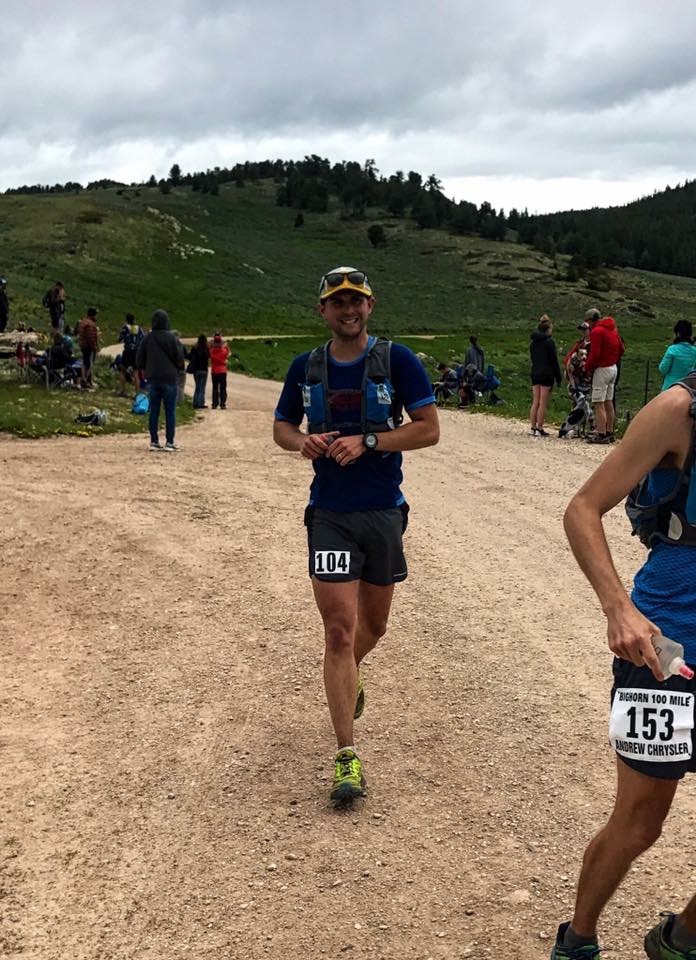
I think I was burping. Photo- Jeff
The section from Dry Fork to Footbridge (mile 30) was the best bit of running all day. Wildflowers of purple and yellow surrounded us as we ran with the canyon walls towering above on either side. The terrain was gentle and rolling with perfect footing as the rain had yet to start. The clouds were still hanging around and shielded us from the sun. Everything was going perfectly.

Cruising through the flowers.
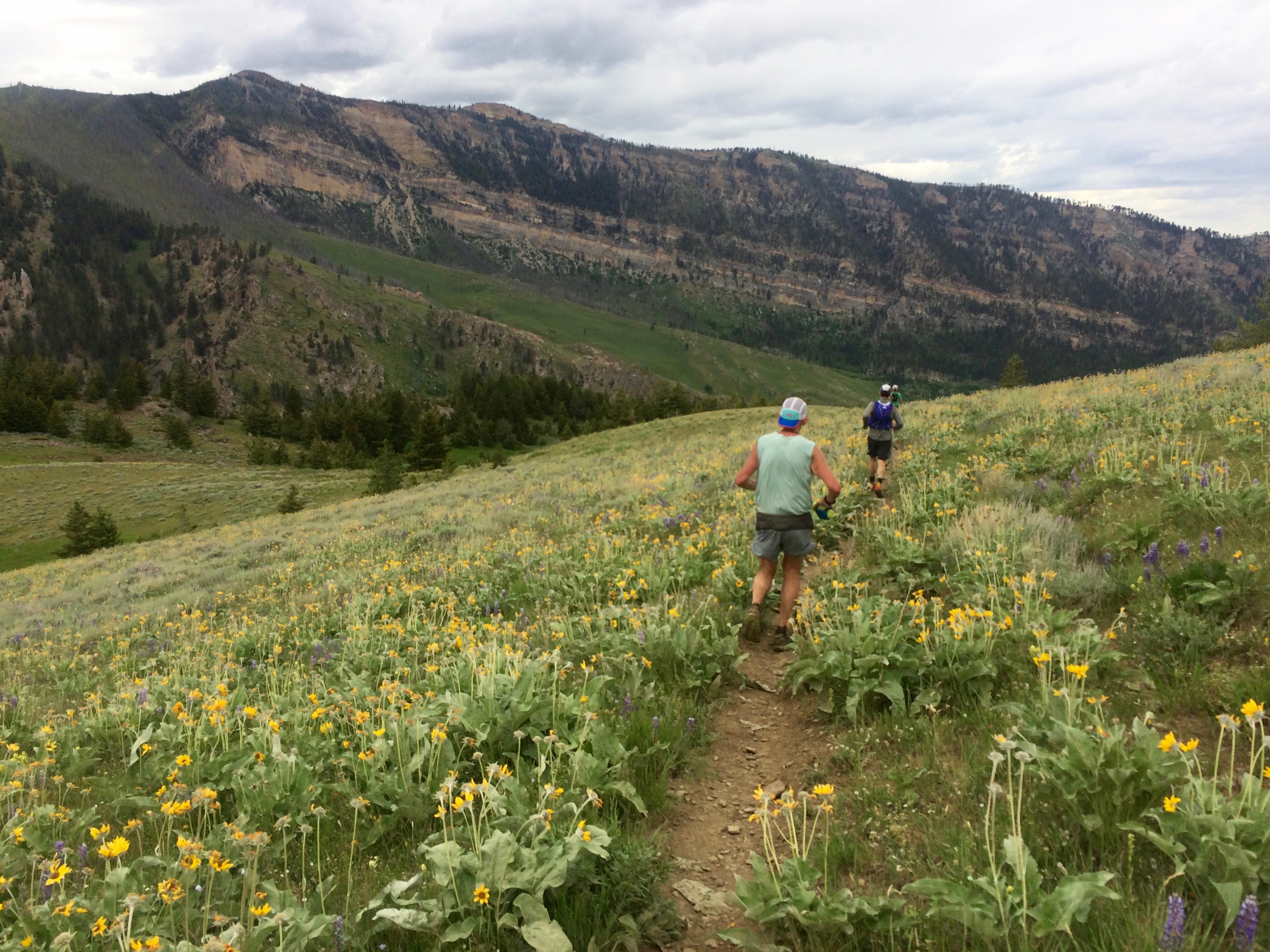
About to descend the Wall.
We neared Footbridge and the infamous Wall. Heading down into Footbridge, the Wall is a steep and fun technical descent. I really enjoyed this rocky section and rolled into the first-class establishment that is Footbridge. Two kids on radios messaged in each runner’s bib number as the aid station neared, so when we rolled into the aid station somebody was handing us our drop bag. I changed out of my shoes and socks while a volunteer delivered me an avocado, potatoes, and boiled eggs.
During the pre-race briefing, we were told that the majority of the mud would start around Spring Marsh (mile 40) and continue all the way to the turnaround. Being an out and back, you would then run through all that mud again, so there was no point in changing shoes and socks at the turnaround. The plan was to change into the S Lab Ultras, which had a little more grip, for the muddy sections from Footbridge to the turnaround and back down to Footbridge. Then change back into the cushy Sense Pro Max for the last 30 plus miles of mud-free terrain.
I left Footbridge with the usual surge of adrenaline that a busy aid station provides. The trail was rocky and paralleled the raging Little Bighorn River for the first few miles. It was a steady 18-mile climb with a little over 4,000 feet of gain to the turnaround. Still feeling strong, I was looking forward to settling into a rhythm of hiking the ups and running the flats. The real fun was just about to begin.
The rain started not too long after leaving Footbridge. I read many race reports and received first-hand advice to be prepared for cold on the climb from Footbridge to the turnaround. I left with a dry bag that included a long sleeve wool shirt, dry buff, gloves, and the Patagonia Airshed Pullover. I also had a raincoat (Patagonia Alpine Houdini) in my pack from the start. These two shells worked perfectly and were indispensable in battling the wind and rain.
It was still warm as the first bit of rain started, and I did not want to stop and fiddle with my pack to get the Airshed and gloves out. Not stopping to layer up at that moment almost cost me my race. My t-shirt was soaking wet and quickly cooling down my core body temp. The wind was getting stronger, and my hands were starting to go numb. Shielded from the wind, I stopped in a patch of trees to throw on the Airshed and gloves. I noticed a big difference immediately, but my wet t-shirt was keeping me from gaining 100% warmth. I hit the Elk Camp aid station at mile 43.5 soon after and threw on my jacket as well. A focused 12 year old served me some warm mashed potatoes and broth. Galvanized by the warm food and additional layers, I was ready to charge up the last 4.5 miles to the turnaround.
The mud was getting ridiculous. With each step, I slid a few inches one way or another searching for traction and ankle deep puddles began to cover the trail. The night was settling in, and I was about 2 miles from the top when I finally had to turn on my headlamp. Headlights from vehicles emerged out of the darkness, and I knew I was getting close. I ran the last flat mile on the road to the aid station ready to eat some warm food and change my base layer.
It was triage in the aid station. I have never seen anything like it. Runners were covered in blankets, huddled around heaters, and staring off into the distance with dazed and blank looks. Volunteers were yelling for chairs and delivering quesadillas and broth to runners all over the place.
A crew was doing everything they could to get their runner back out.
Crew- “What if you keep the down jacket on and double up with two Houdini’s?”
Runner- “No. I’m done.”
Crew- “Leave here and make it to Footbridge before you decide to drop. We will be there and you can drop there if you want to.”
Runner- “No. I’m sorry.”
Despite being on my feet for 48 miles and battling the cold, rain, and mud for the past 3 hours, I felt amazing. Seeing nearly all of the other runners shivering and dejected gave me an extra boost knowing I felt so great.
Jeff had my drop bag and helped me refill my pack with food. I was so glad to get my soaked base layer off and put on the long sleeve wool shirt. Jeff reminded me to take my time here and get some food in me. I munched on a quesadilla, black beans, and broth. After 15 minutes of eating and getting warm, we charged out into the cold night.
Me- “I hope you’re ready to get muddy.”
Jeff- “Is it honestly that bad?”
Me- “Dude, it’s insane.”
The warmth of the tent was hard to leave and the frigid wind immediately pierced us upon exiting the aid station. It actually snowed up at the turnaround overnight. The mile of road back to the trail would be the last bit of sustained running over the next 33 miles.
We quickly hit the trail and began splashing through the puddles and skating on the mud. Jeff was laughing like a little kid at how awful the trail had become. We went on to hike the 18 mile descent (yes, hiking downhill!) back to Footbridge.
We went through periods of laughing at the mud and cursing the mud. In all my planning before the race, this section was going to be a fun downhill to run. I was on pace for around a 25-26 hour finish after reaching the turnaround in 12 hours. I figured there was no way we could travel faster than 3 mph in these conditions. Would I finish closer to 30 hours? Beyond that? When people asked me my goal time leading up to the race, I told them I thought I could go around 27 hours if I had a great day. I would also add that if it took 34 hours, then that’s what it would take. I had said this so many times but it had never entirely resonated with me. The reality started to set in that it may actually take 34 hours. Yikes.
Frustration started to set in the closer we got to Footbridge. Jeff and I would try to run but then lose traction after a few steps and then slip sideways and wildly catch ourselves. Jeff took one nasty fall in which I had enough time to hear him hit the ground, turn around, and see him continuing to slide a few feet down the side of the trail. I was holding out that the conditions would get better near the turnaround, but they only worsened.
Jeff broke a long period of silence.
Jeff- “How you doing?”
Me- “I’m just getting really frustrated with this shit.”
Airing the frustration out loud was mildly cathartic.
Me- “But hey, (forced chuckle) what can we do?”
The smell of campfire and the lights from Footbridge eventually came into view. Finally! It had taken me 5 hours and 14 minutes to climb the 18 miles from Footbridge to the turnaround. The muddy 18-mile descent had taken 5 hours and 24 minutes.
The original hustle and bustle of Footbridge was no longer. It was 4 in the morning, and the volunteers were still going above and beyond, but the long day and night in the rain was wearing on them as well. A volunteer delivered my drop bag and took my order. Similar to my last stop at Footbridge, I was quickly delivered a plate of potatoes, avocado, and boiled eggs. The sense of urgency I previously had in each aid station had vanished. Sitting down felt nice. Not concentrating on every step and making sure I didn’t fall was a welcome reprieve.
Jeff snapped me out of my stupor and I went about taking off my shoes. The mud had nearly caked the laces to the point where I couldn’t untie them. A gracious volunteer nearly pulled me out of my chair trying to take off my mud infested knee high compression socks. I washed my feet in a tub of water, slathered on some RunGoo, and welcomed the foreign feeling of dry shoes and socks.
Me- “I don’t want to do this for another 34 miles. This may actually take all 34 hours.”
Jeff later told me after the race that he was thinking the exact same thing upon leaving Footbridge. But being a good pacer, he didn’t say anything.
The thought of sliding around in the mud for another 50k with zero running sounded awful. But dropping was not an option. I had invested too much time, money, and effort into training for this race. I was going to finish.
We had stopped long enough in the aid station for a chill to set back in. Thankfully, the climb up the Wall quickly warmed us up. The eternal optimist in me had a flicker of hope that the mud was going to get better. It did not.
We were a little halfway up the Wall when the sun started to peak through the rain clouds. Jeff and I turned around for an epic sunrise that would accompany a John Muir quote and spark renewed motivation in us to keep going. But the dang rain clouds didn’t even allow for a beautiful sunrise.
I’m usually the bird geek pointing out different types of birds, but Jeff pointed out a nighthawk circling around and dive bombing into bogs for its morning breakfast. All the other birds were waking up and starting their morning songs. The sunrise was disappointing but the merry band of birds made up for it.
We approached Bear Camp aid station (69.5) which signaled the Wall was almost over. The mud was super slick at the steepest parts, and we were falling backward with each step. Desperate for any aid, I grabbed a Hobbit hiking pole to help reach the top.
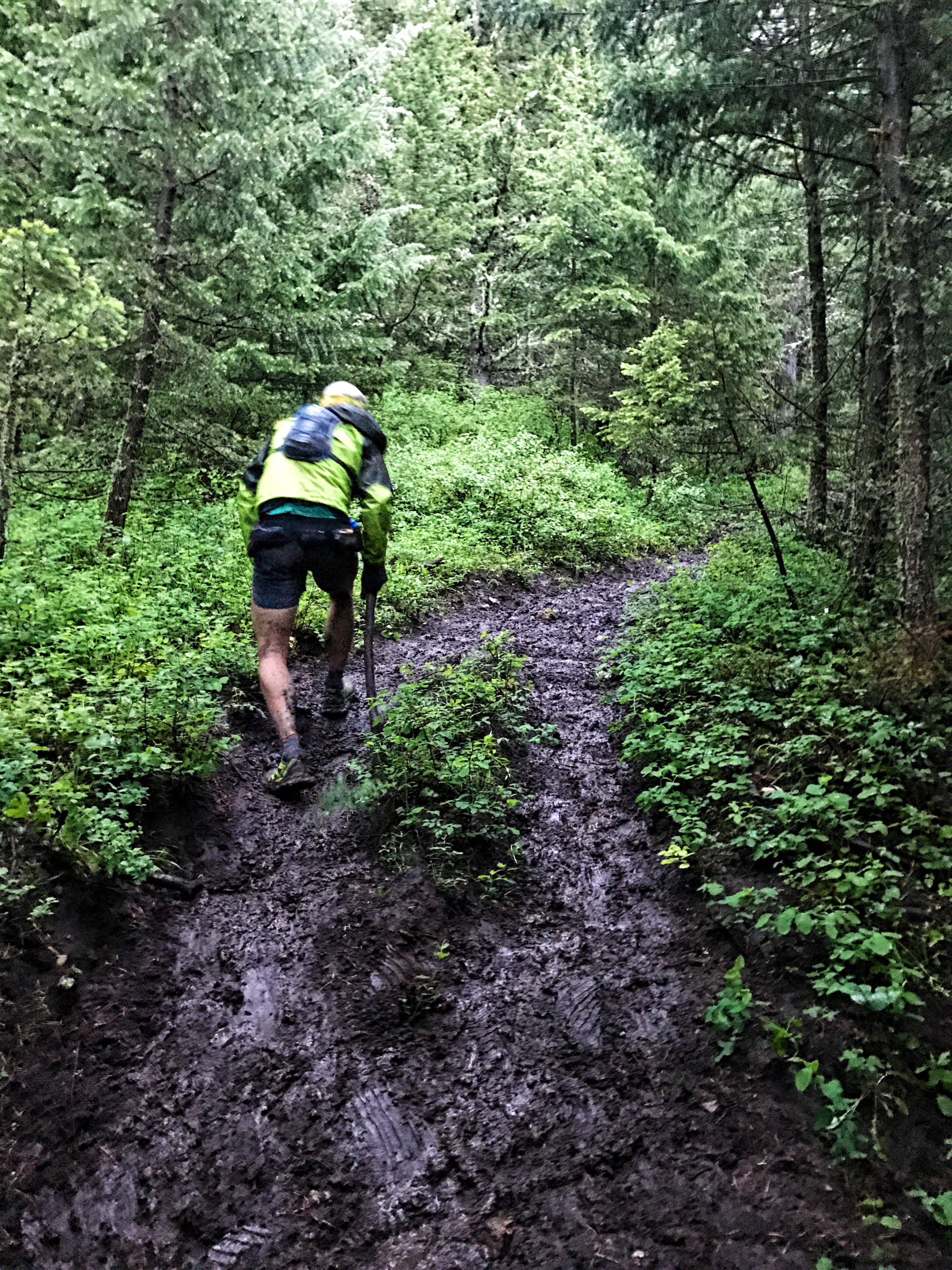
Limited edition Hobbit trekking cane. Photo- Jeff
The next 13.5 miles would have been runnable if for not, you guessed it, the mud! A pity party was slowly starting to creep in.
Me- “You know David Horton’s mantra, ‘It can’t always get worse.’ It honestly feels like it keeps getting worse.”
Jeff- “Well it’s not raining anymore. The wind isn’t blowing. It’s light out again. And you can’t beat the scenery.”
I had never fully understood that mantra until then. Jeff said exactly what I needed to hear and saved me from going to a bad place.
Jeff had been taking a keen interest in the different types of mud like some sort of scientist. He kept me distracted and entertained with his classifications of different types of mud. The final tally of mud categories, ranging from beef soup to caramel taffy, totaled 9 by the end of the day.
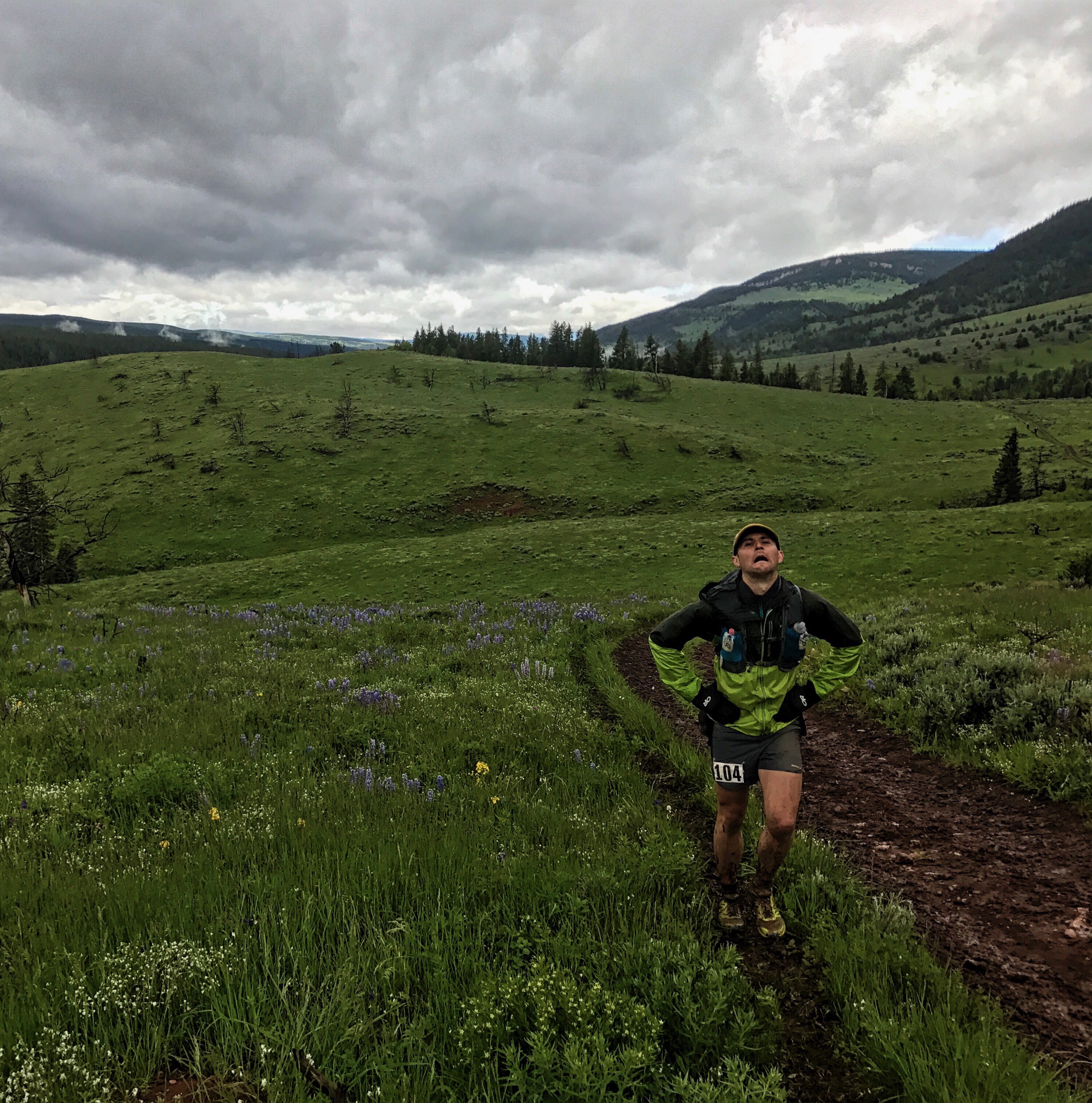
“No more mud!” Photo- Jeff
We approached the last climb back up to Dry Fork aid station and continued to work against the mud. Jason Schlarb randomly ran by going the opposite way. Jeff and I guessed he got tired of waiting at Dry Fork to pace someone and was running back to find his runner. He was gliding effortlessly on top of the mud (But how, was he wearing cleats?) with his mullet blowing in the breeze. He bellowed sternly and quasi-inspirational, “The sun is coming! Hang in there!” And just like that, the sun slowly started to break through the clouds for the first time all morning.
We finally made it to Dry Fork aid station, and the finish remained 18.5 miles down the mountain. 18.5 miles felt so far away after averaging 20-minute miles for the past 11 hours. Maintaining that pace would mean another 6 hours until the finish. We were closer to the finish than we had been all day, but the thought of trudging through the mud for another 6 hours was overbearing.
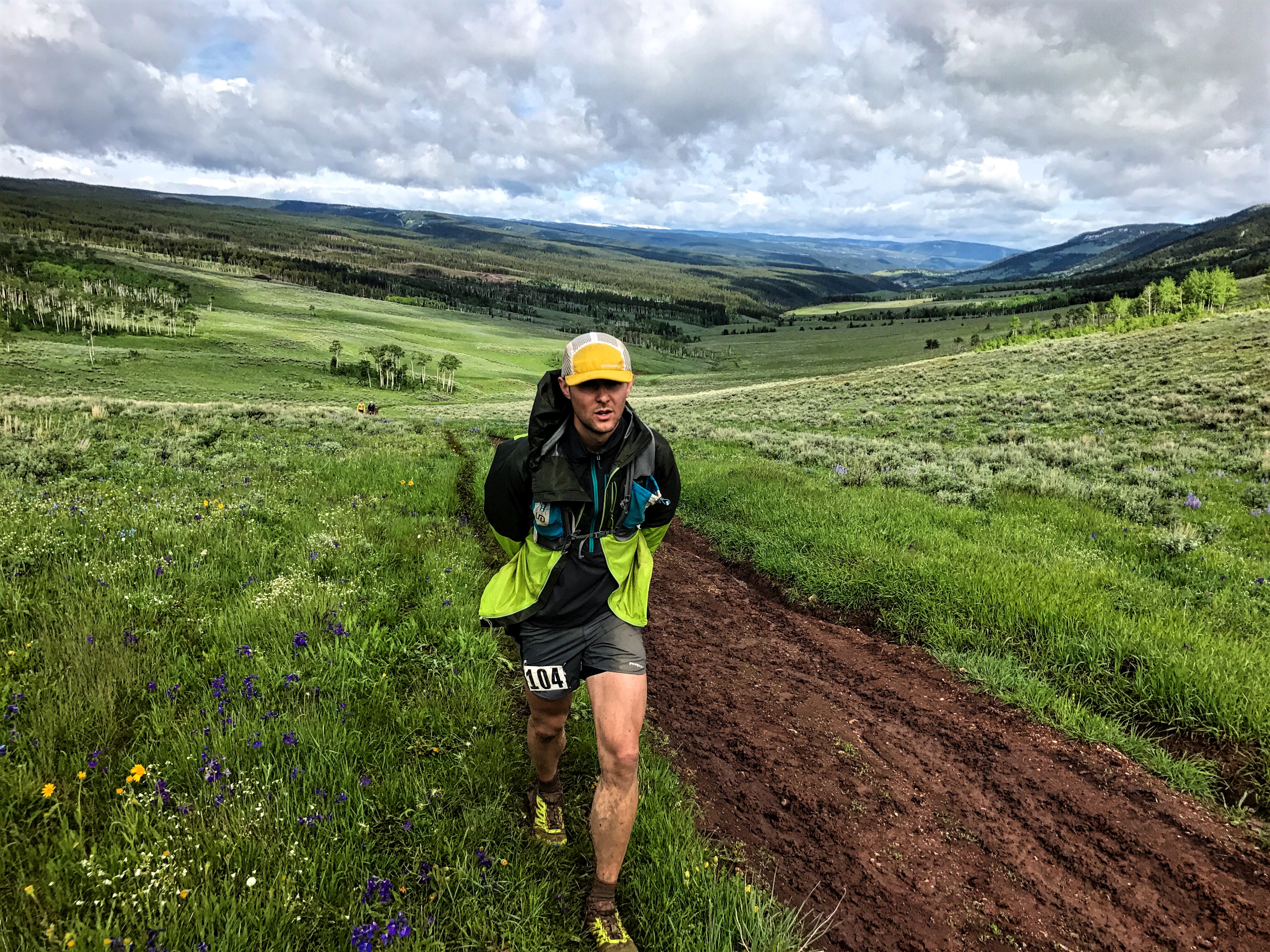
Almost to Dry Fork. Photo- Jeff
I wanted to sit down, take the time to eat some food, and take a mental break from the mud. All the chairs were taken by other mud caked runners. I continued to pan right and left hoping I missed sight of an empty chair.
Volunteer- “Do you want to sit down?”
Me- “Yes.”
Volunteer- “There is a warm trailer right outside and you can go sit in there.”
Me- “Oh, thank goodness. Thank you.”
Jeff and I walked over to the trailer, which had a nice 3 foot clearing to climb into the trailer. I was too apathetic to laugh or curse having to jump up and in the trailer. I sat there drinking coffee and eating potatoes calculating whether or not I would be able to make it to the finish before the cutoff.
Me mumbling to myself- “It’s probably around 2 o’clock. That means 6 hours to finish. If the mud remains horrendous then the best we can do is 3 mph which puts us at the finish pretty close to the 8:00 PM cutoff.”
I actually did not know what time it was. My watch was in my rear pocket and I did not feel like fiddling with it and getting it out.
Me- “What time is it?”
Volunteer making pizza- “It is…10 o’clock.”
Me- “What!? It’s only 10!? Wow, I thought it was around 2!”
I was ecstatic. I chugged the rest of my coffee, and we hopped off the precipice of the trailer to continue marching towards the finish.
We had a short climb up a dirt road before hooking back up with the single track that would take us all the way back to the start. We would then continue past the start and run 5 miles of dirt road back into town to get our money’s worth of 100 miles.
Bighorn also has 52, 32, and 18 mile races that start on Saturday and run on the same trails. One report said that a bunch of people got off the bus for the 32 miler, saw the terrible conditions, turned their bib in, and climbed back on the bus for the ride back to town.
The 18 mile race had just started behind us as fresh and jovial runners passed by. 100 mile runners had white bibs and caked mud covering their posterior to identify their different race distance. I was slightly annoyed with the 18 milers prancing by in their clean shoes and proceeding on to chew up whatever bit of decent trail was left. But so many runners passed by with praise and admiration for those running the 100. It put things in perspective that I was currently 85 miles into this quest through the mire, and I was still moving.
The clouds had finally parted and the beautiful blue sky had reappeared. And the trail was finally runnable! Yeah, there was a little mud but it was mud you could actually run through.
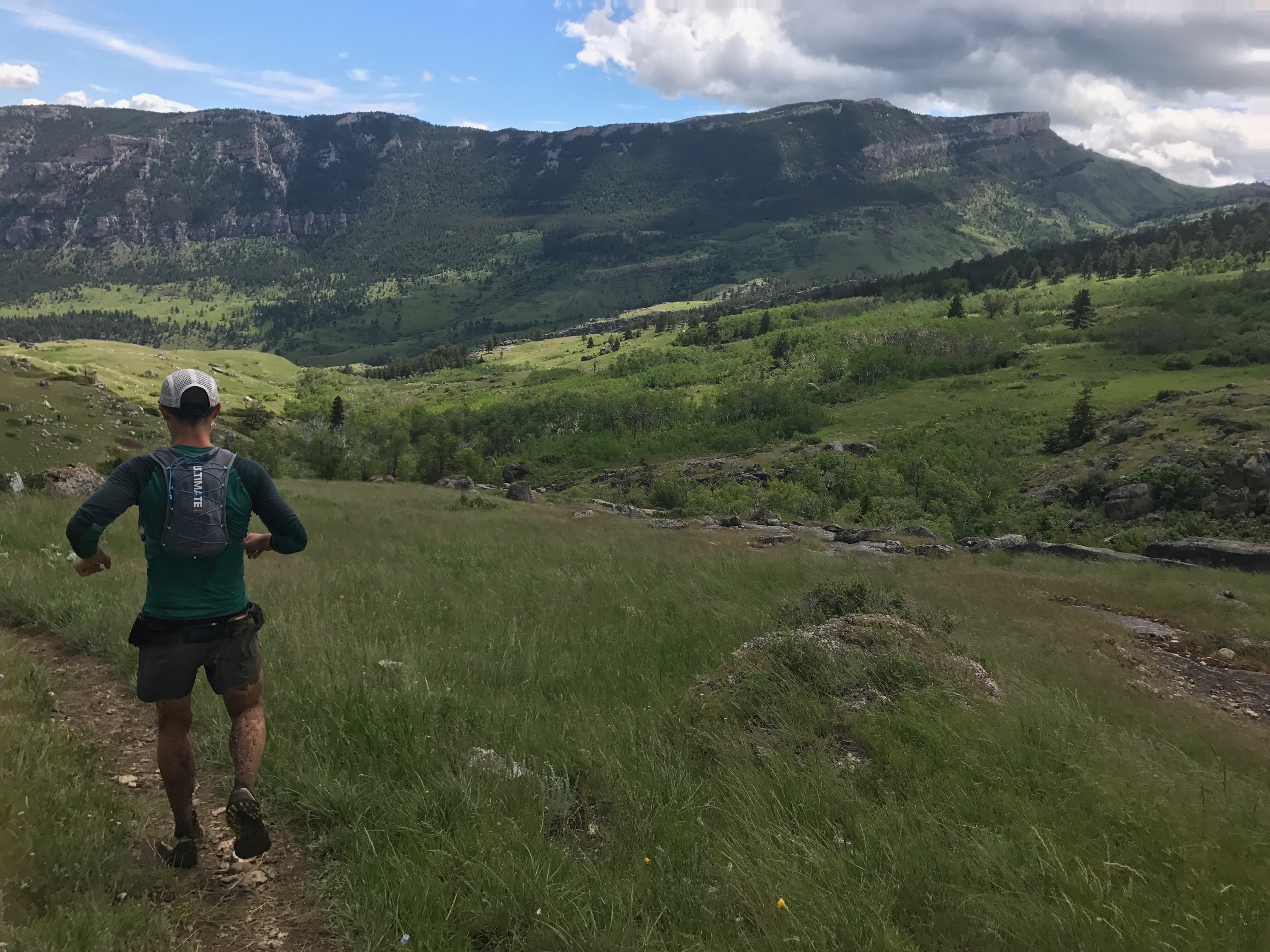
Yay running! Photo- Jeff
Jeff volunteered to take the lead and we started passing a bunch of 18 mile racers. It was euphoric to actually open up our stride and run. The coffee had kicked in, the sun was shining, and we were running. The muddy nightmare was over.
We rolled into Upper Sheep Creek and were 12.5 miles from the finish. I was finally warm enough to take off my two shells and gloves. I pounded some potato chips and downed a caffeinated gel for the last short climb of the day. The last 12 miles would then be flat or downhill.
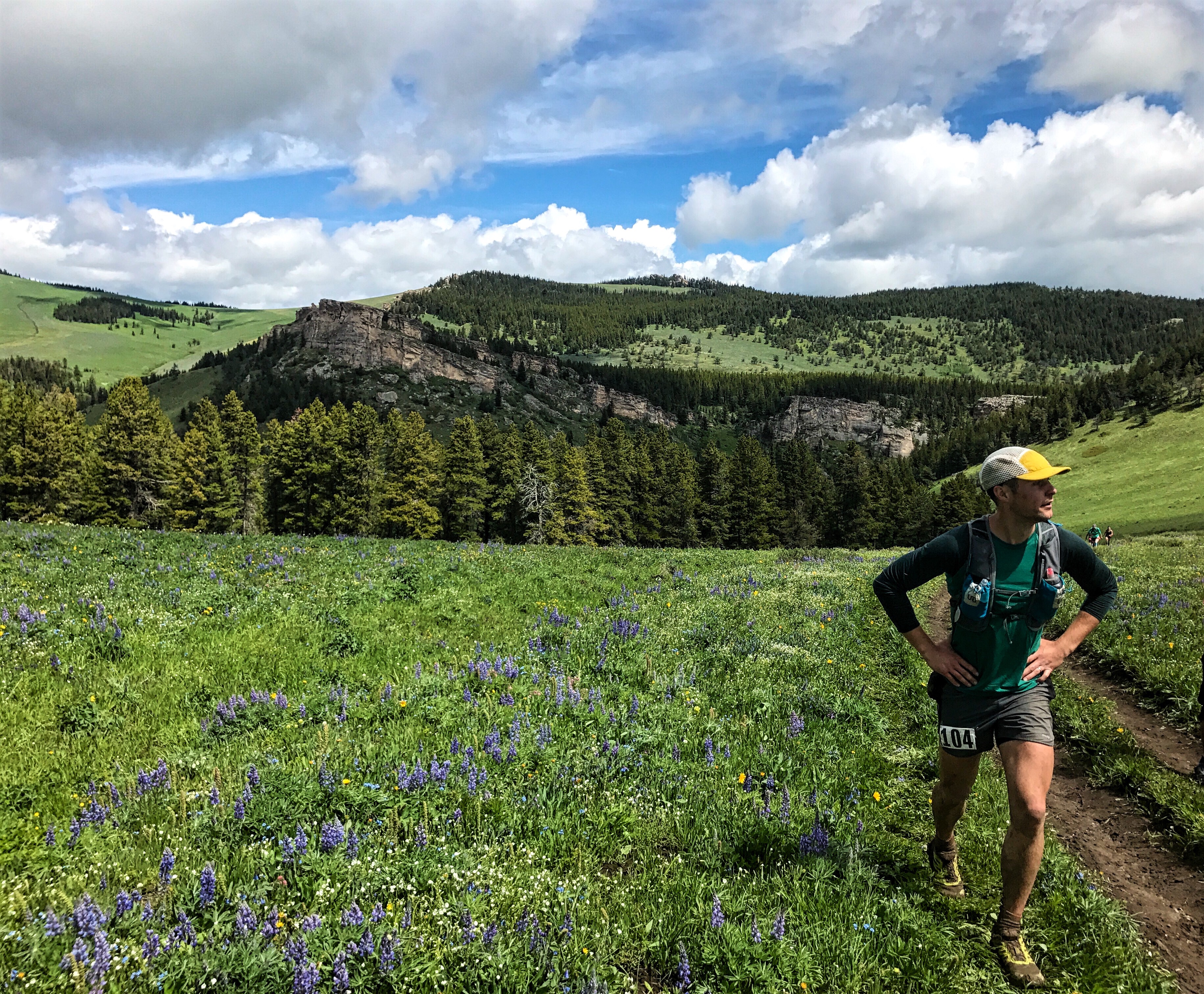
Last climb of the day. Photo- Jeff
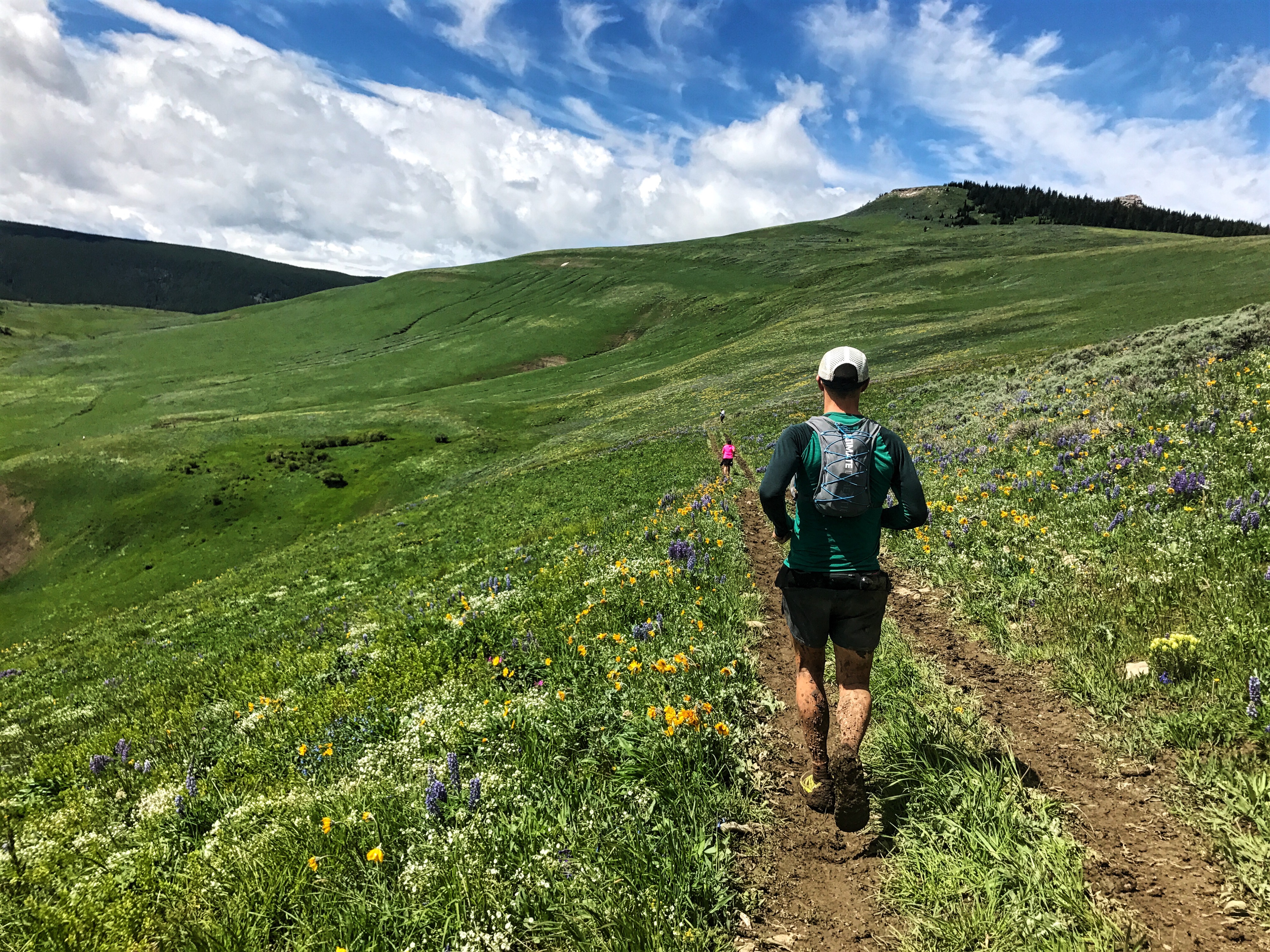
All downhill from here. Photo- Jeff
My legs still felt good and we ran the long descent at a decent clip passing several 18 milers and a few 100 milers. The exertion of actually running, the warming temperatures of descending lower, and the sun being out made it a little warm. I continued to sip water but did not want to bother with eating while running downhill. I started to heat up and was no longer sweating.
We reached the road for the last 5 miles of flat running back into town. I was starting to feel a little weird after overdoing it on the descent. I put ice in my hat and shorts and was sprayed down with water at the aid station.
Jeff- “You’ve got 58 minutes to go under 28 hours. So that’s 12 minute miles with a little extra time.”
Me- “We can do that. Let’s run/walk it in.”
The run/walk strategy was working for about the first 2 miles and then I hit the wall. I finally had my first hallucination.
Me mumbling to myself- “Is that a? A dead baby armadillo? Oh no. Just a stick and some pine cones.”
Jeff- “What’s that?”
Me- “Oh, nothing.”
I felt hot but also cold. I felt loopy and was starting to get tunnel vision. I was staring off into the sky, zoned out, and then remembered where I was and what I was doing. Any effort greater than a walk felt like I would pass out. I was quiet for 5 minutes as all these thoughts were swirling internally. I didn’t know how to verbalize how I felt without worrying Jeff or myself.
Me- “Dude, I do not feel good.”
Jeff- “What’s up? Hot, cold? When’s the last time you ate?
Jeff helped me problem solve. At first, I thought I was too hot so we poured water over my head. I then quickly got the chills from the water and strong crosswind. He then made me put my jacket on and forced me to eat. I slowly came out of whatever it was and managed a measly shuffle for the last half mile.
Jeff ran up ahead to get a picture of me crossing the finish line and I was by myself for the last few minutes. I tried to soak it in and think back to the whole day. The high of getting to mile 48 and feeling like I could turn around and do it all again. The mental lows of trudging through the mud for hours on end and wondering if I would ever reach the finish. Being grateful for Jeff coming all the way out to experience the muddy madness and for being the perfect pacer who never pushed me too hard but always had the perfect response to keep me going. I got choked up as I approached the finish line but was too emotionally and mentally wasted to do anything other than cross the finish line.
28 hours and 15 minutes later, it was all over. I did it. I felt empowered like never before. I could do anything. Except take my mud encrusted socks and shoes off.
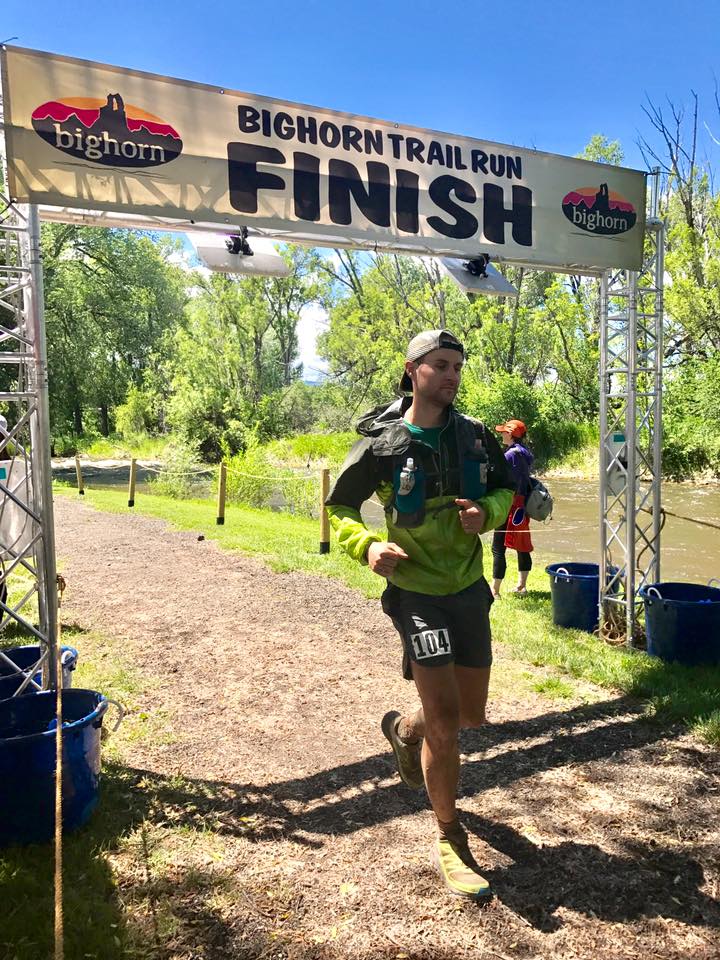
Finished. Photo- Jeff
Bighorn is a first class event. The volunteers braved the awful conditions day and night and catered to the needs of all the runners perfectly. Many of the aid stations were so remote that supplies had to be hiked in or ridden on horse or ATV. Yet, almost every aid station was stocked with warm food and had everything a runner could need.
I lost count at some point but consumed around 50 Spring Energy products along the way. I had zero stomach issues all day.
And big thanks to Nashville Running Company for their support. I’m glad to be on the race team for the store that helped me get my start into trail running.
Only 175 of the 373 racers finished the 100-mile run for a finisher rate of 47%. Kudos to every single runner, crew, and volunteer who was out there.
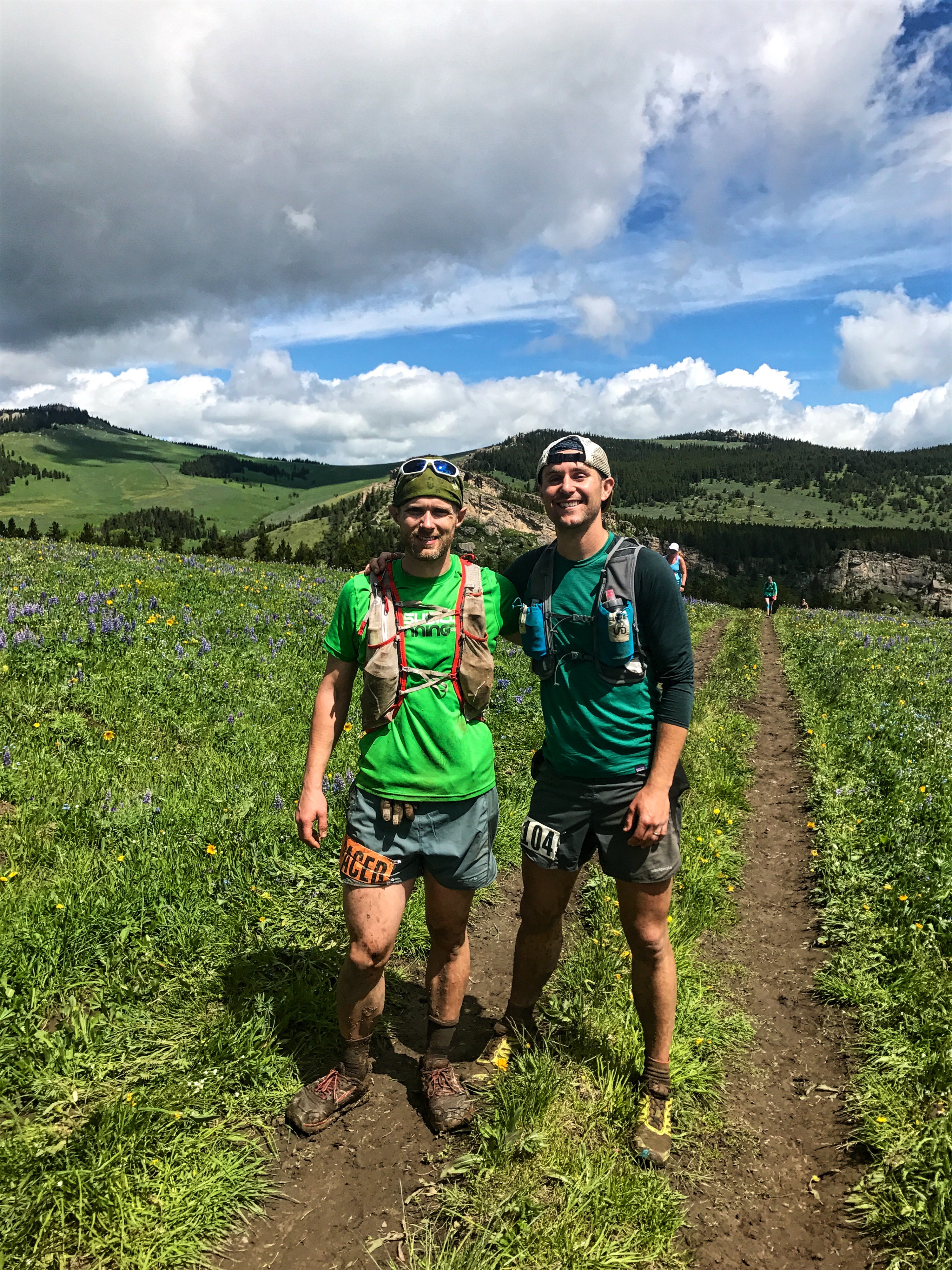
Thanks Jeff for being the best pacer ever.
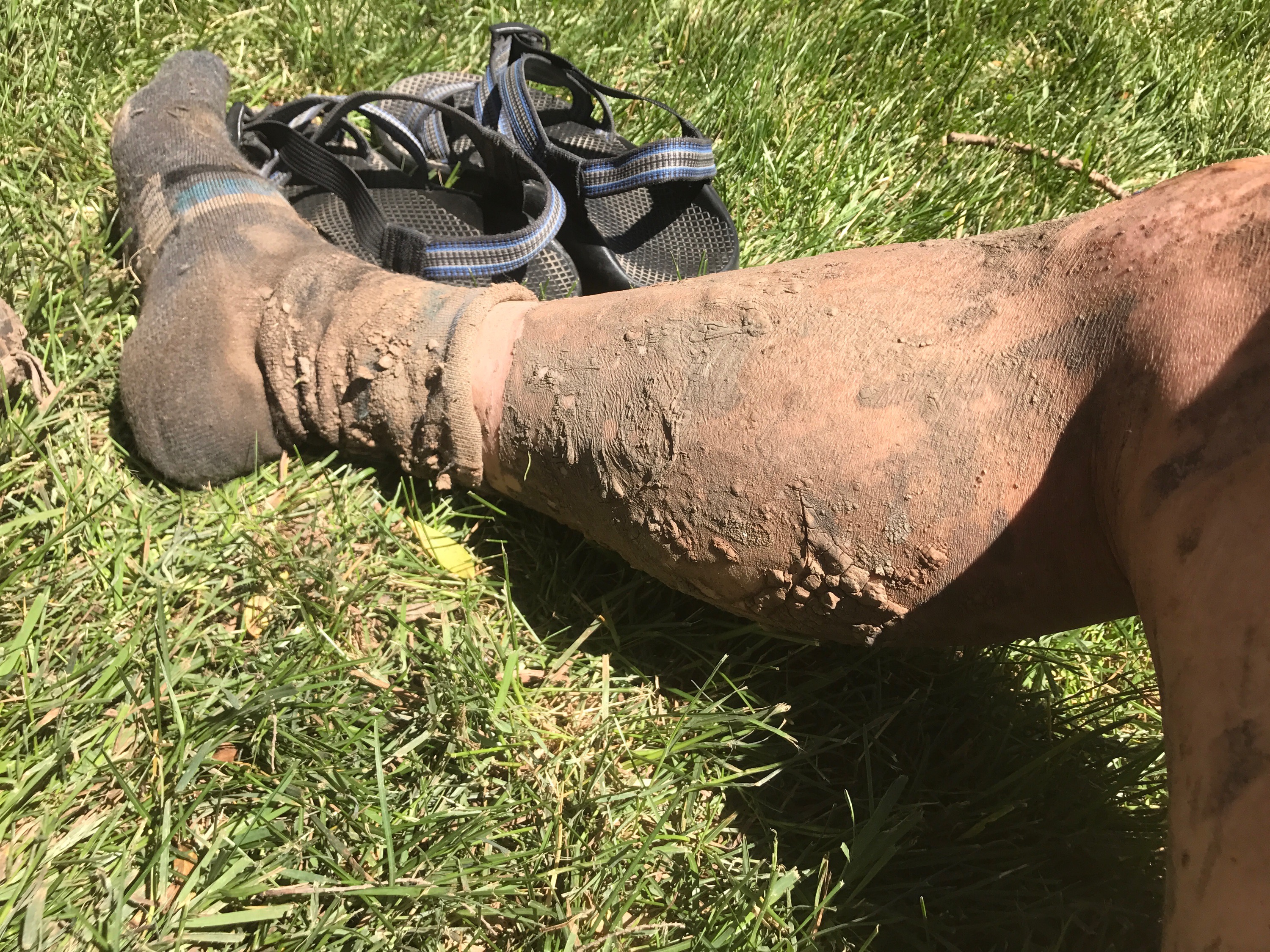
Jeff’s legs post race.





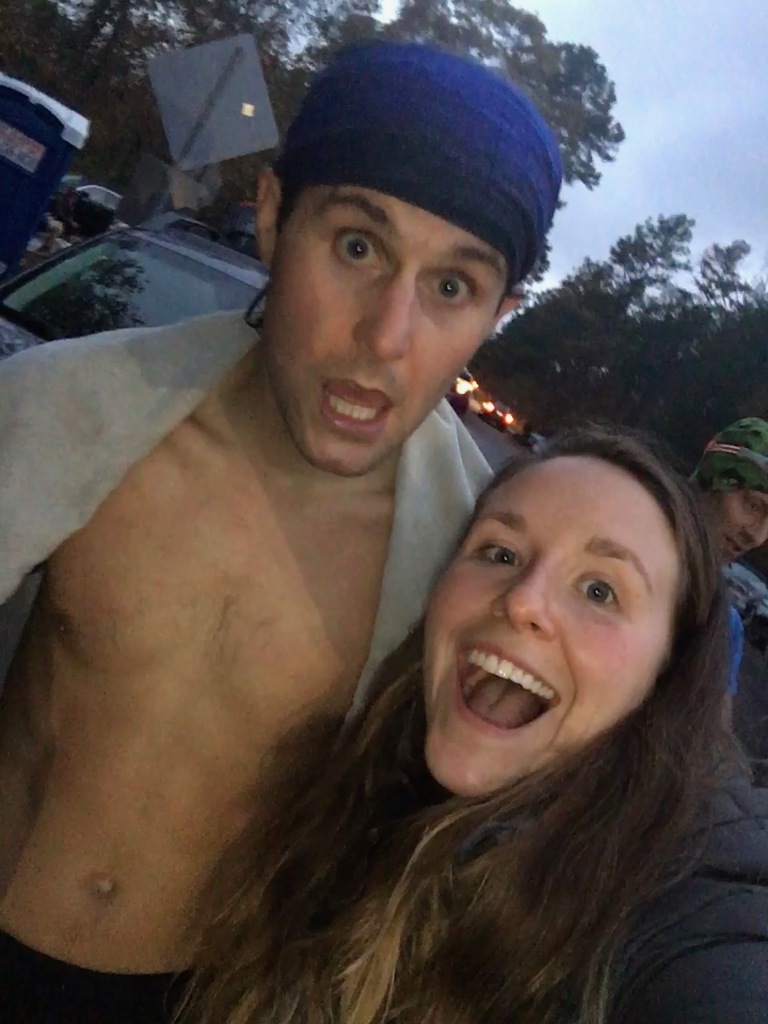

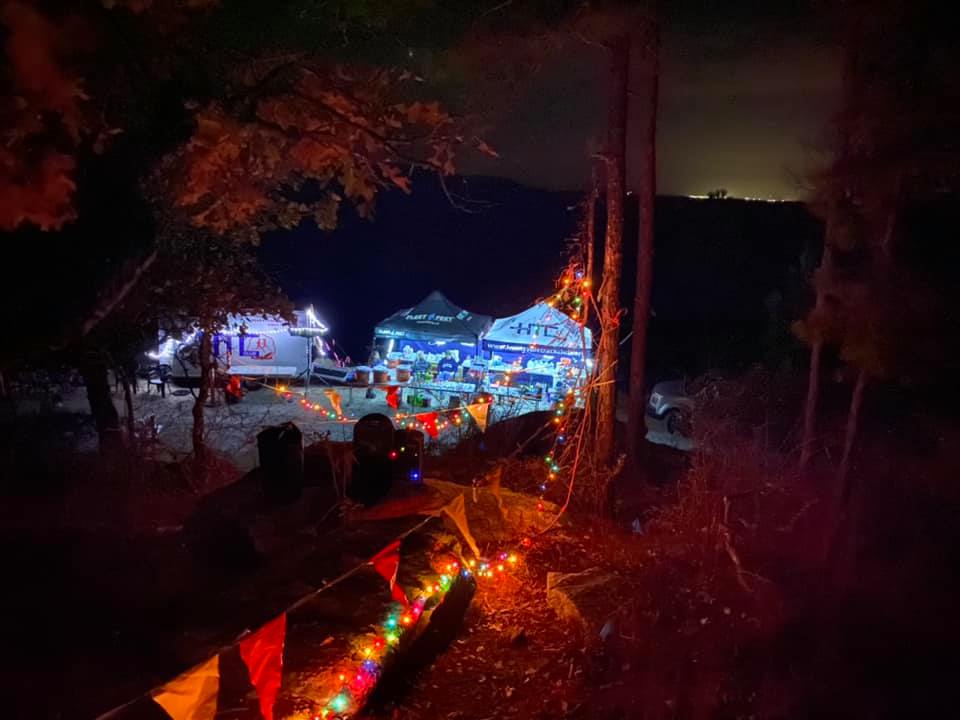

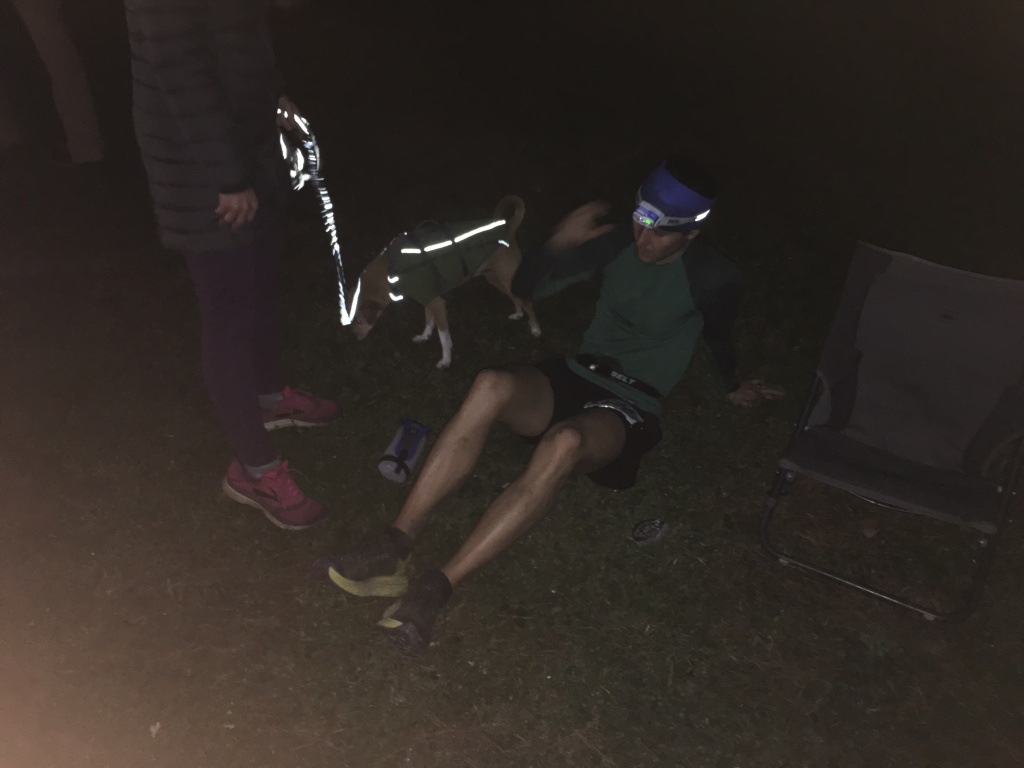
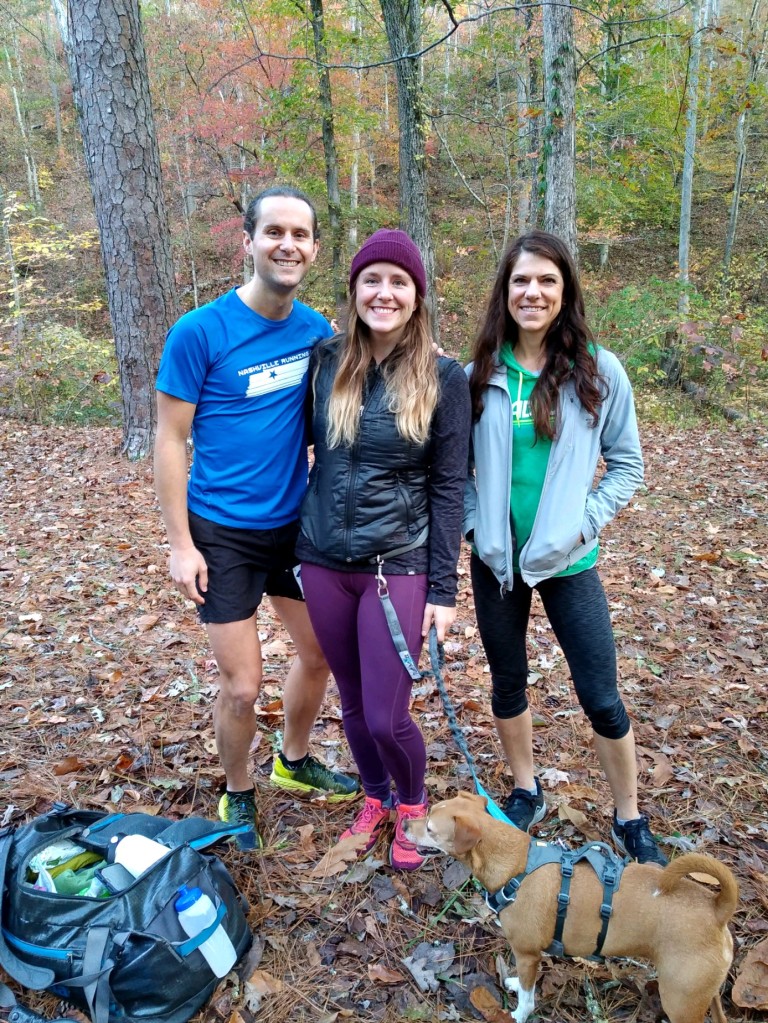
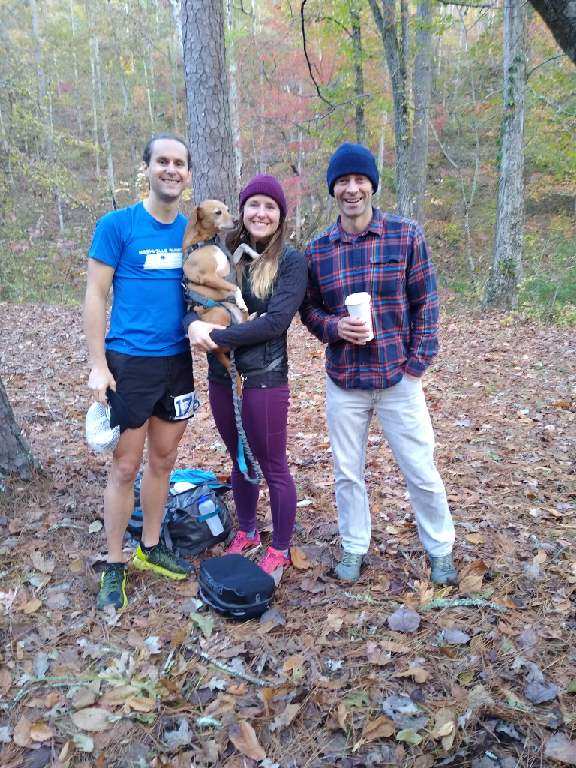

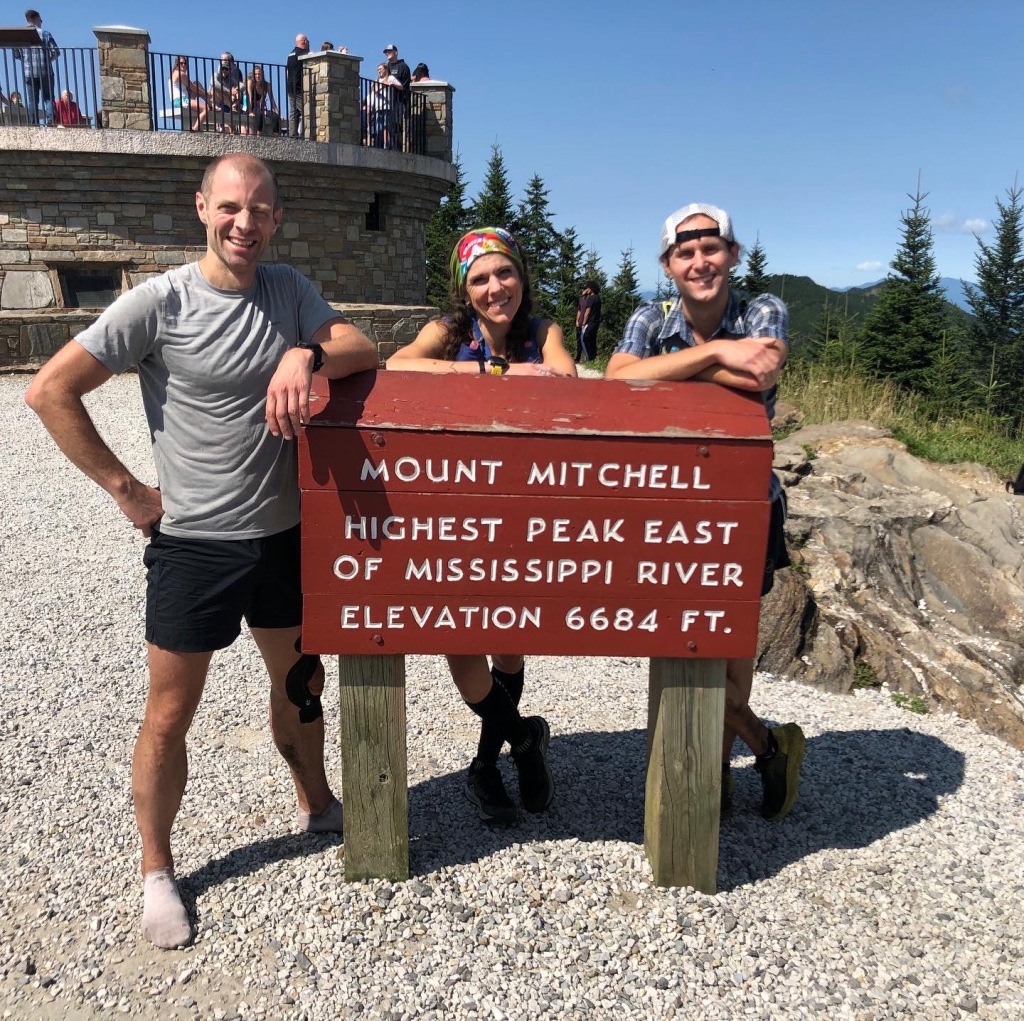

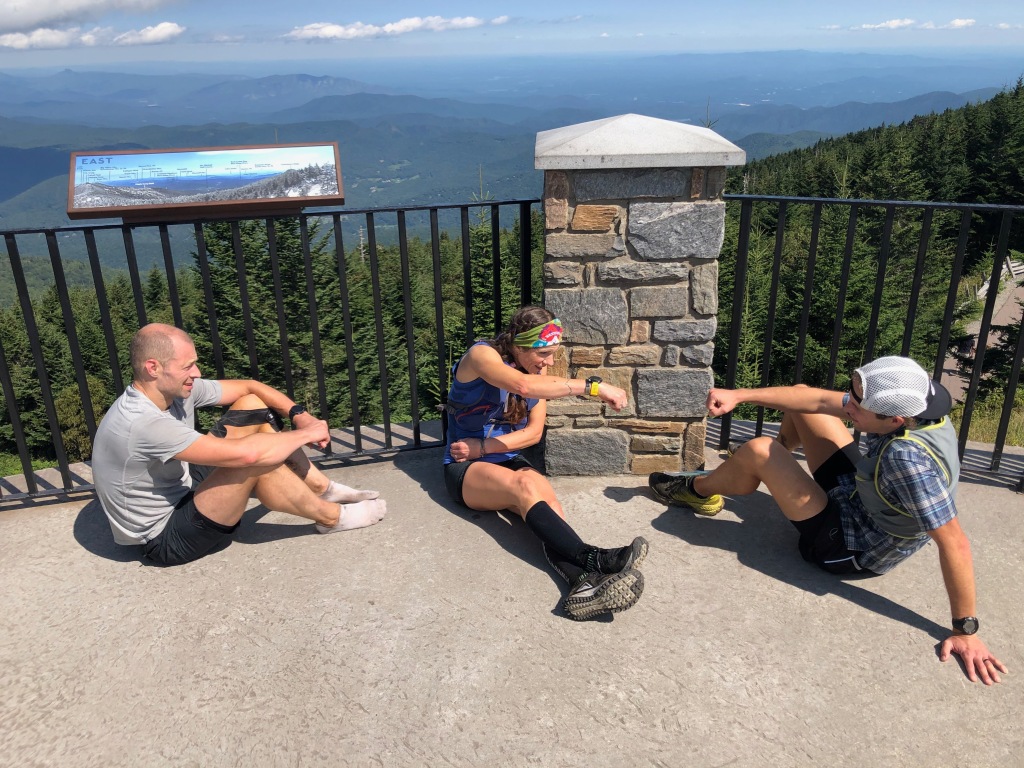

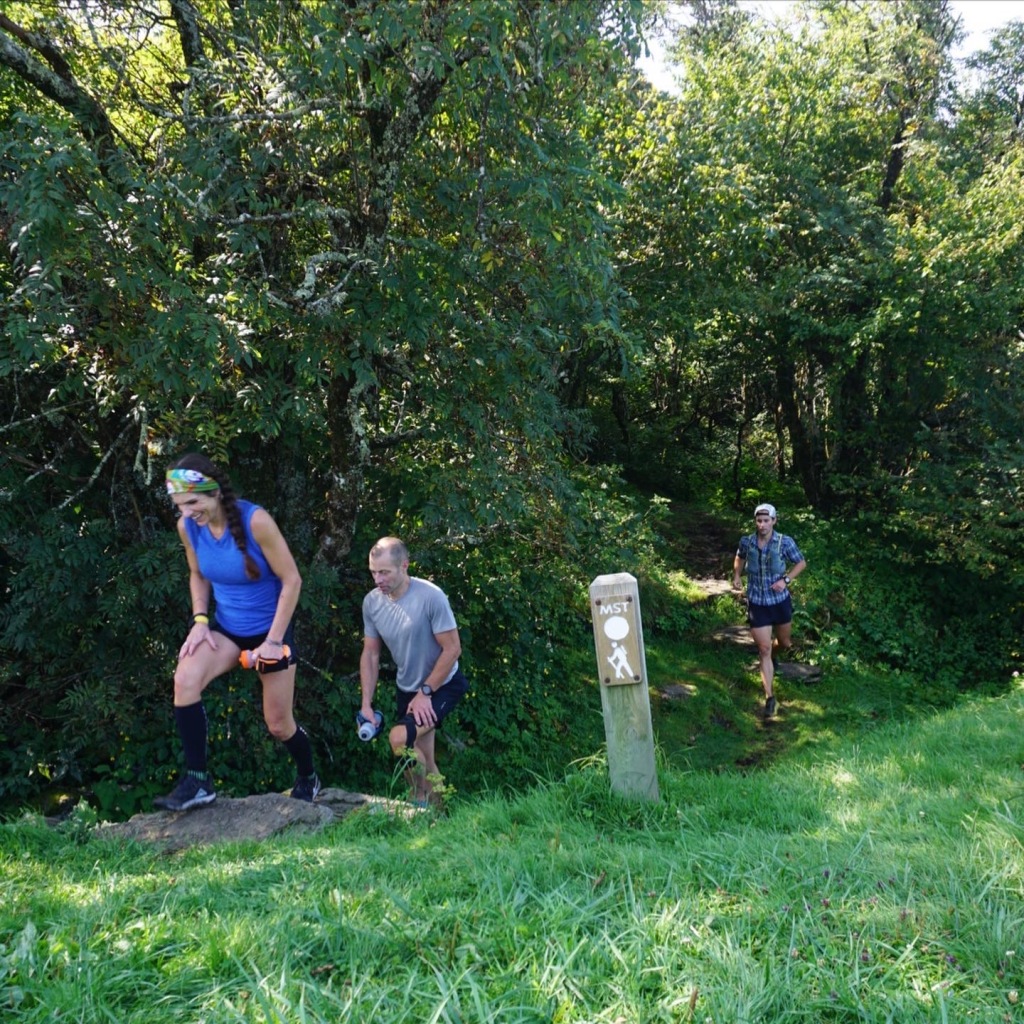

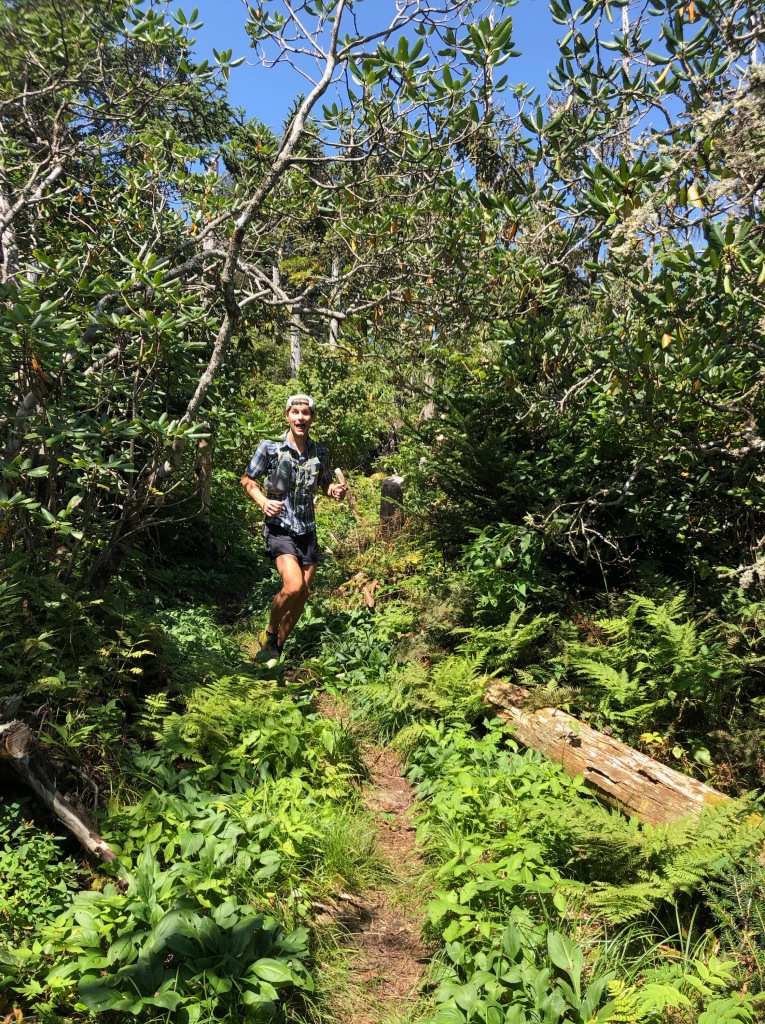

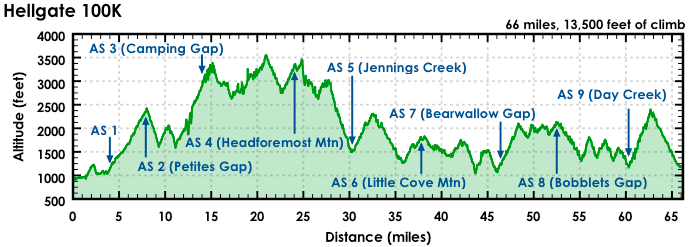 Start to Petites Gap (0-8)
Start to Petites Gap (0-8)